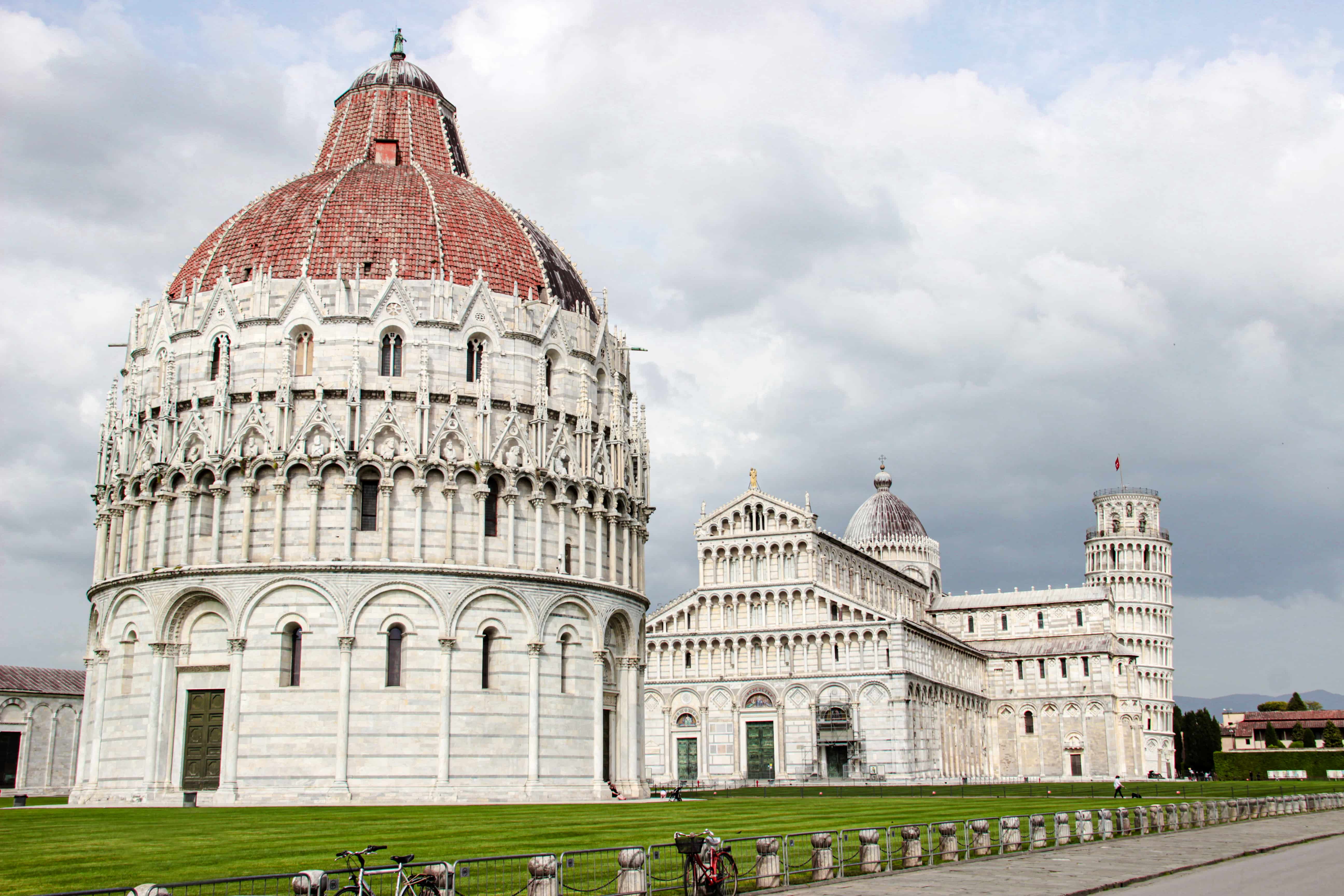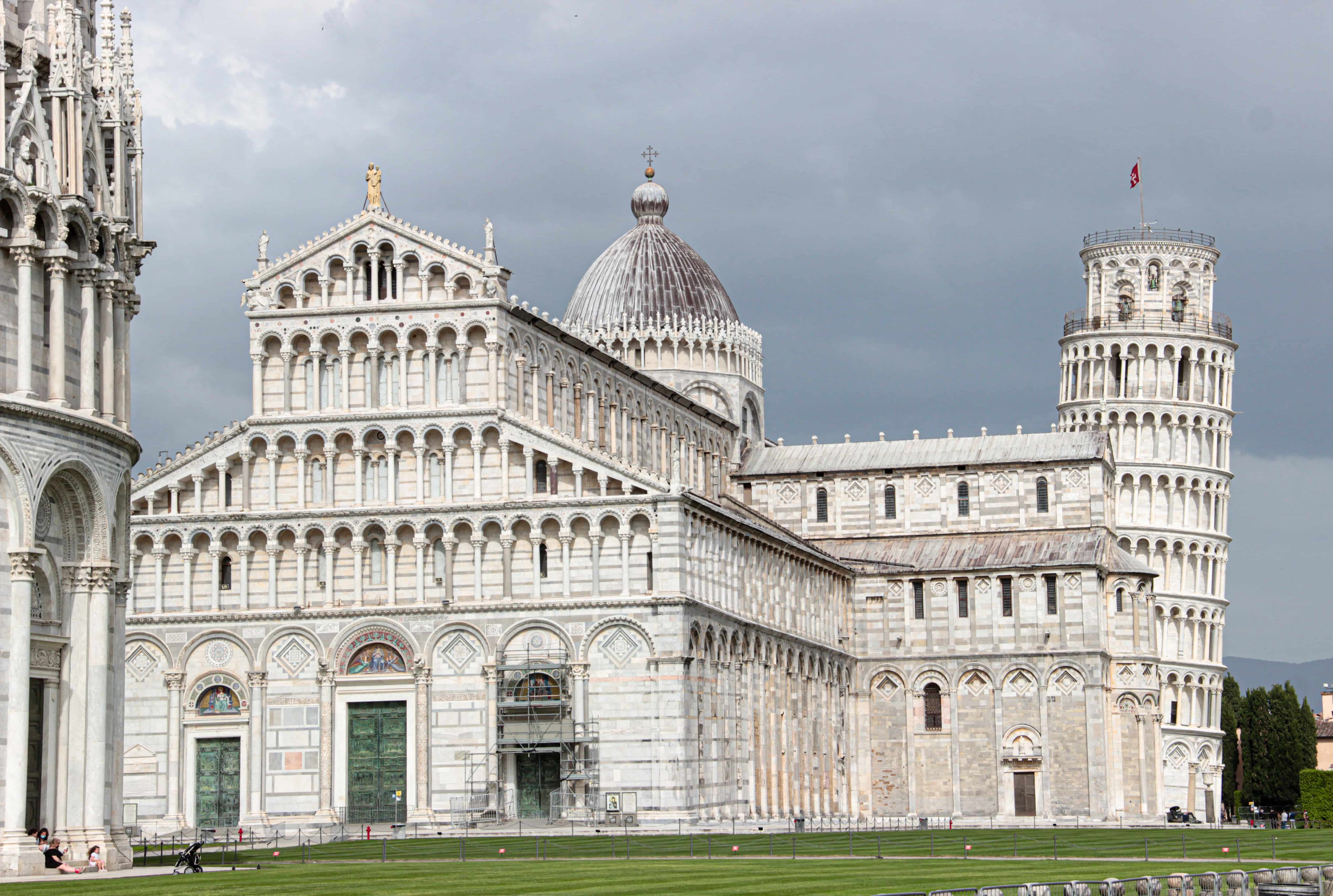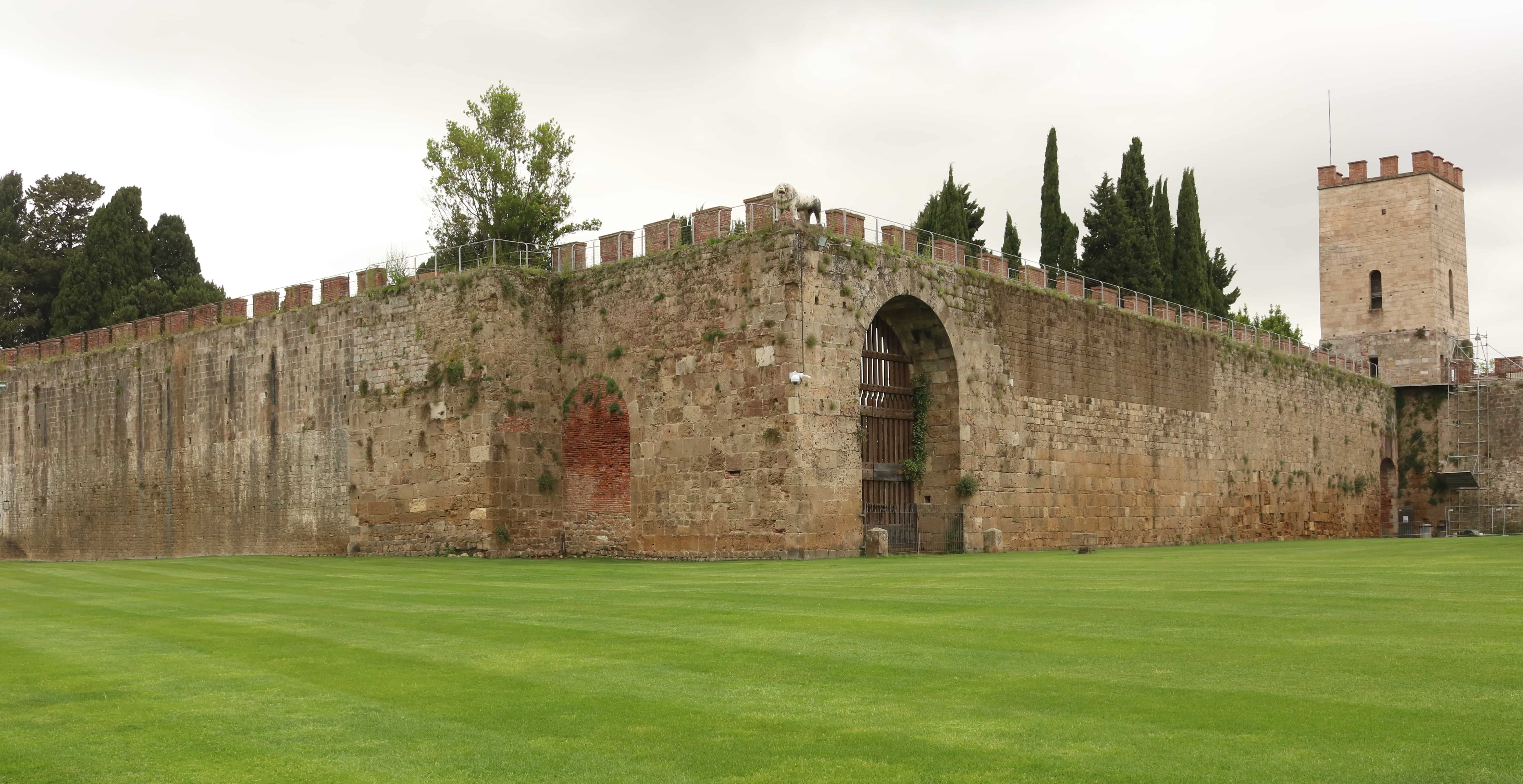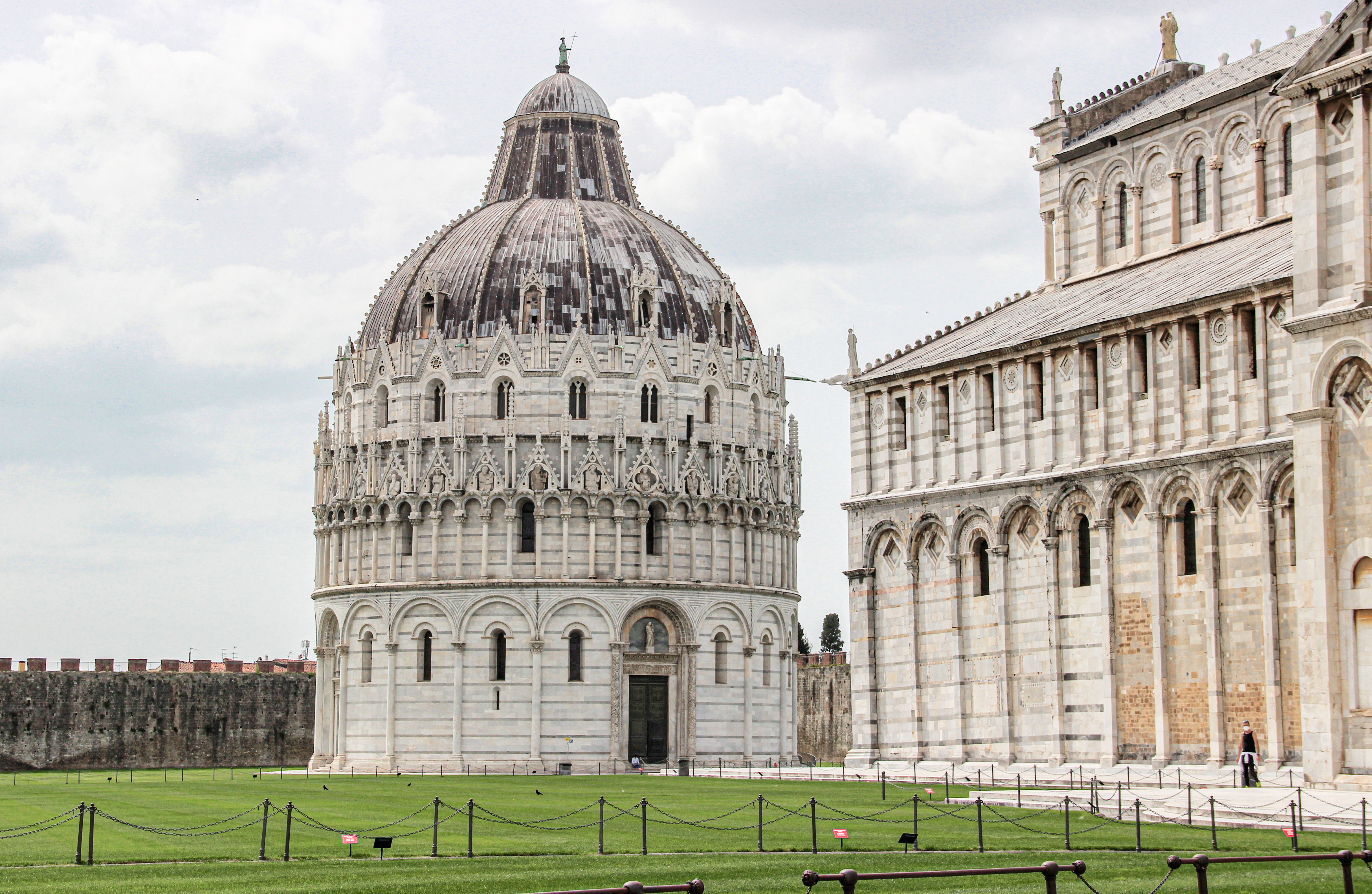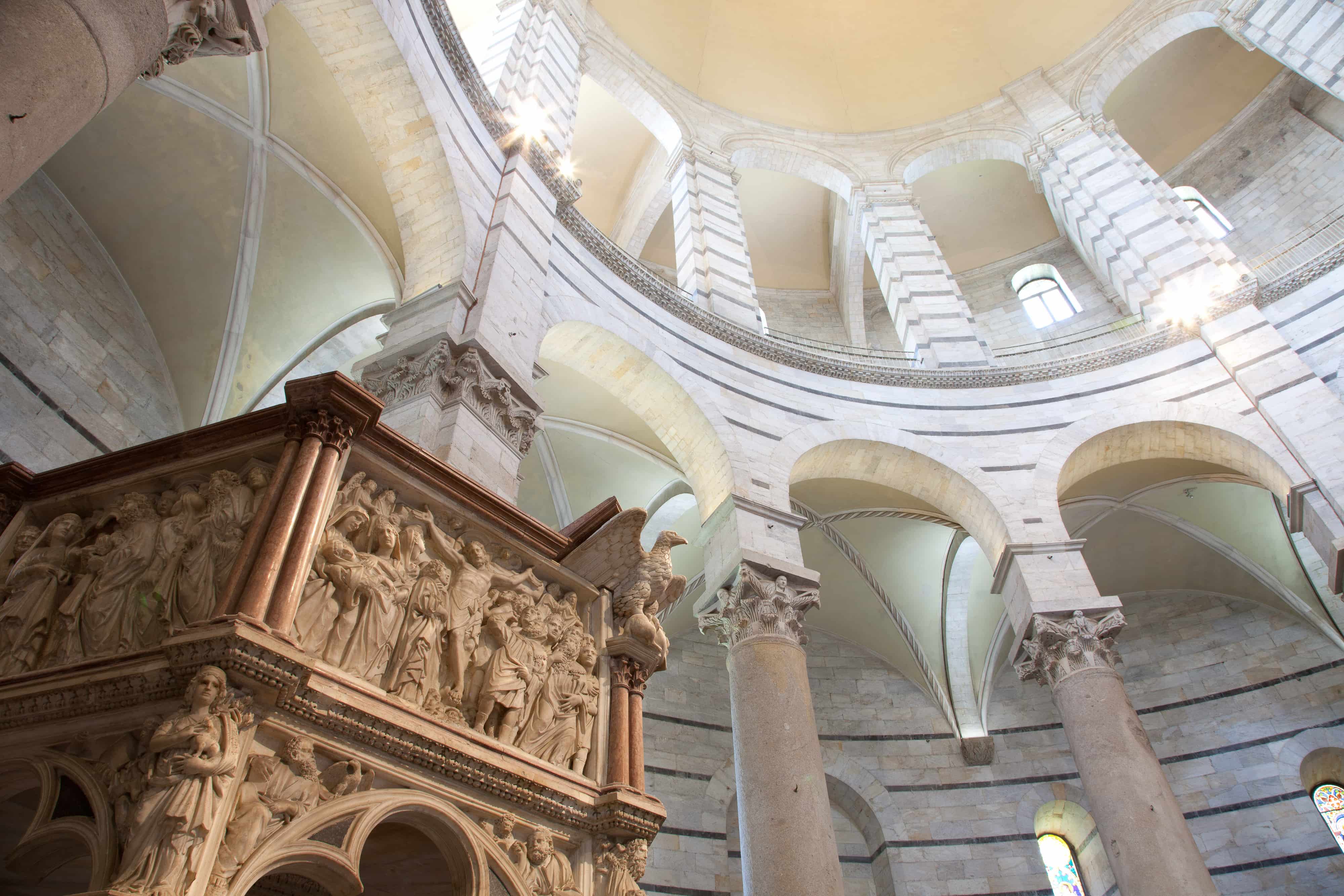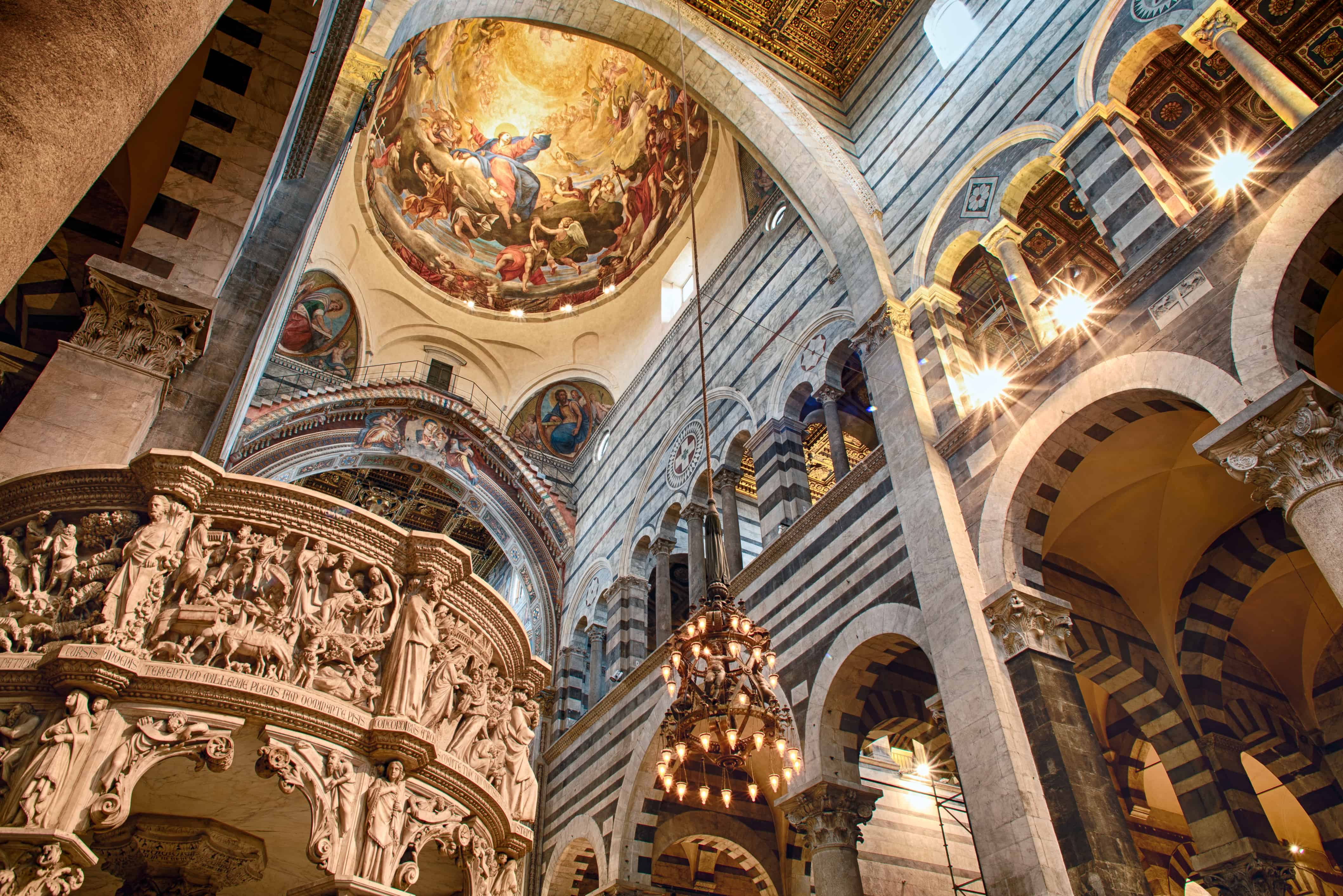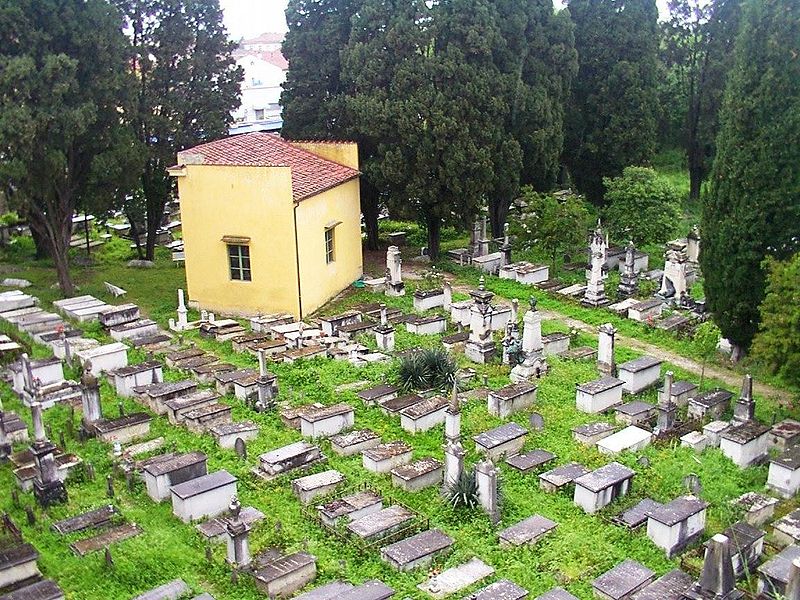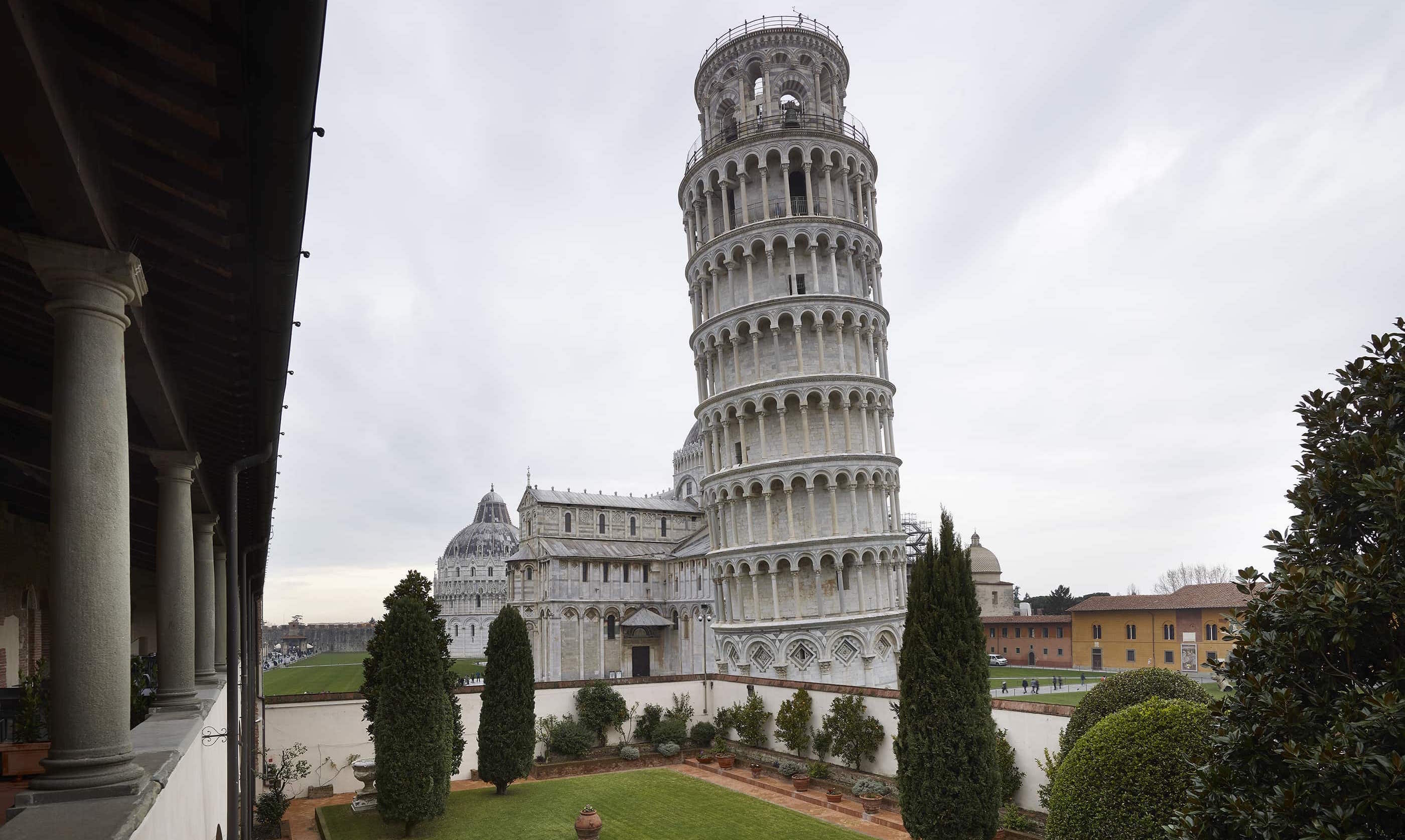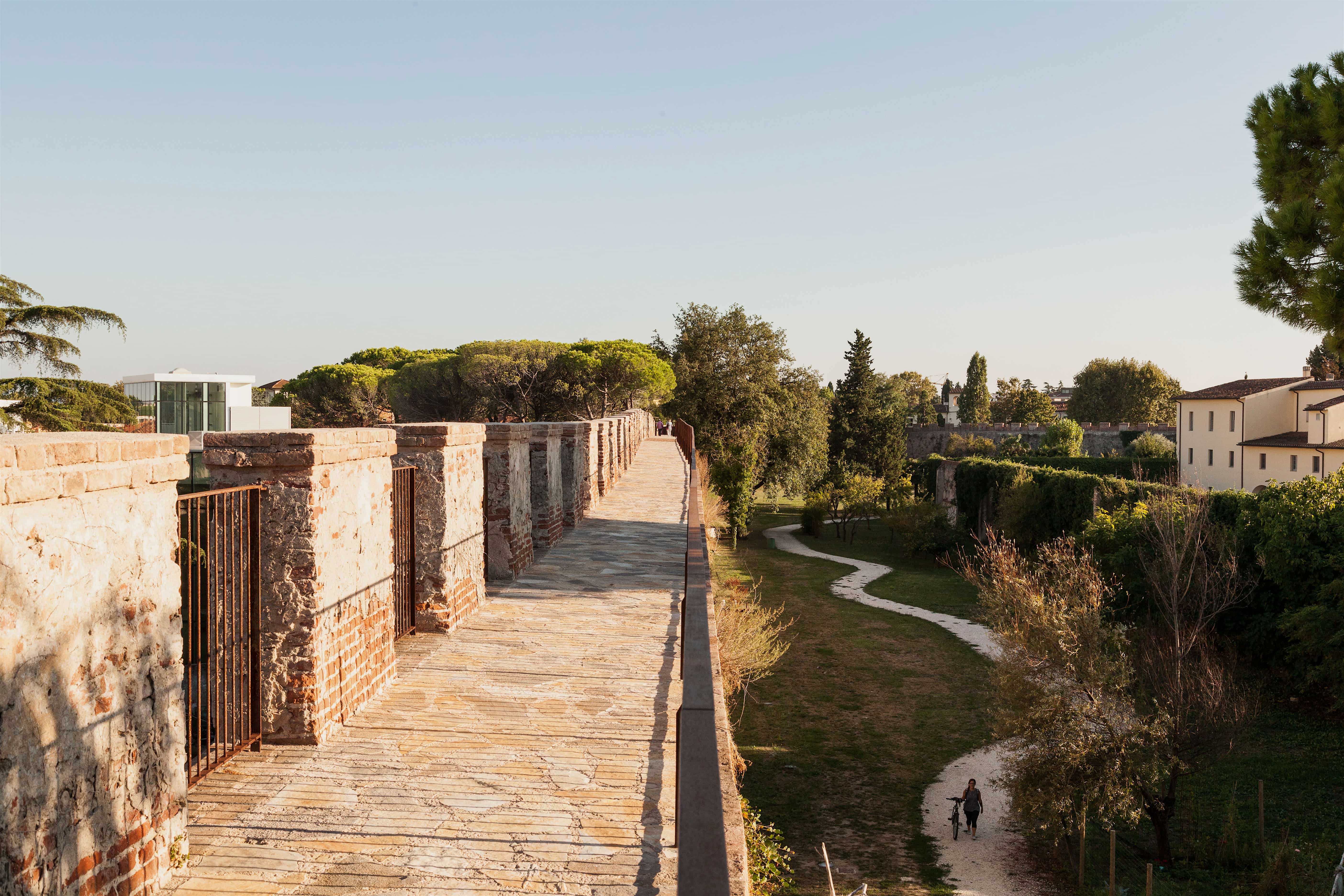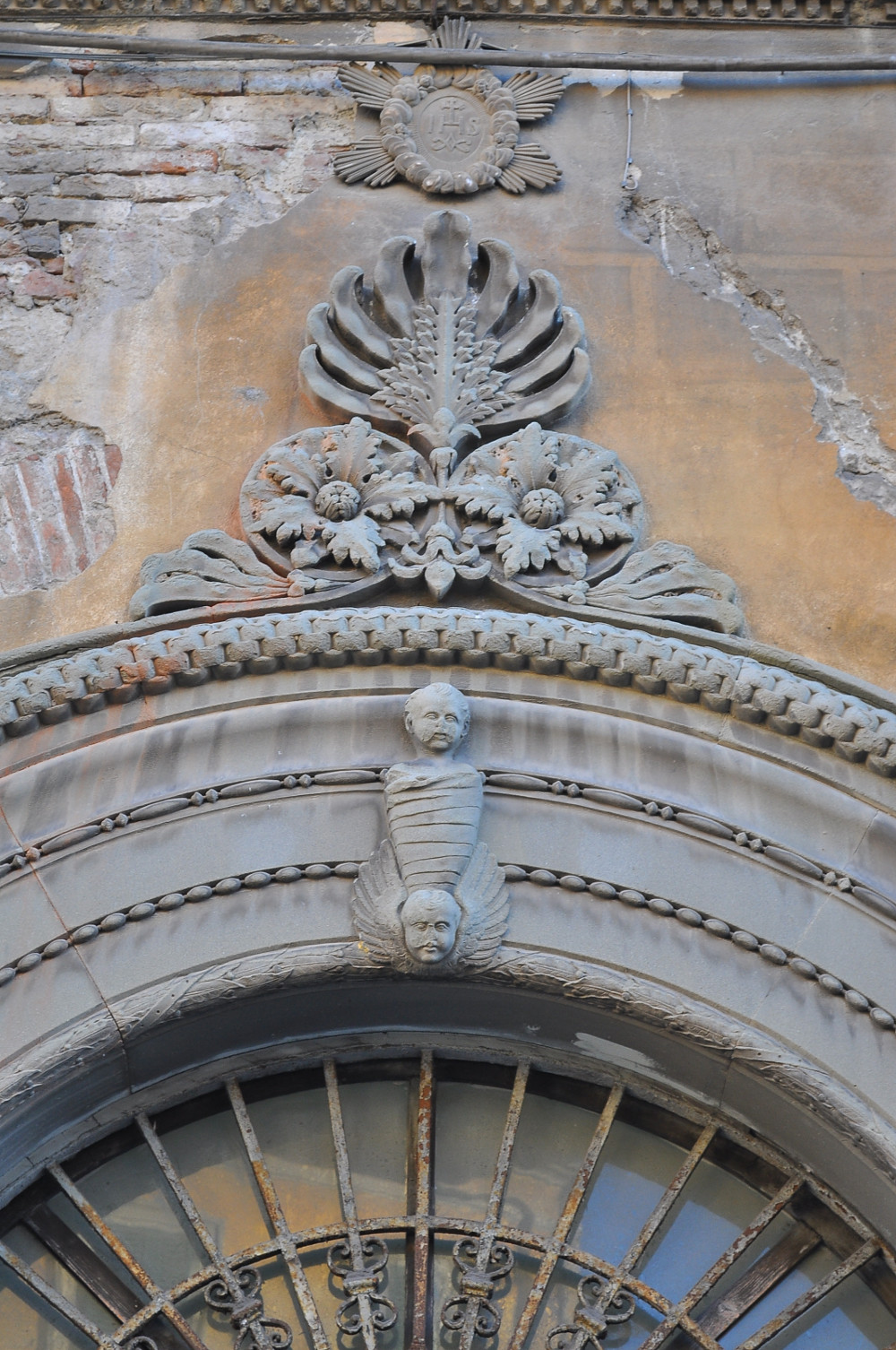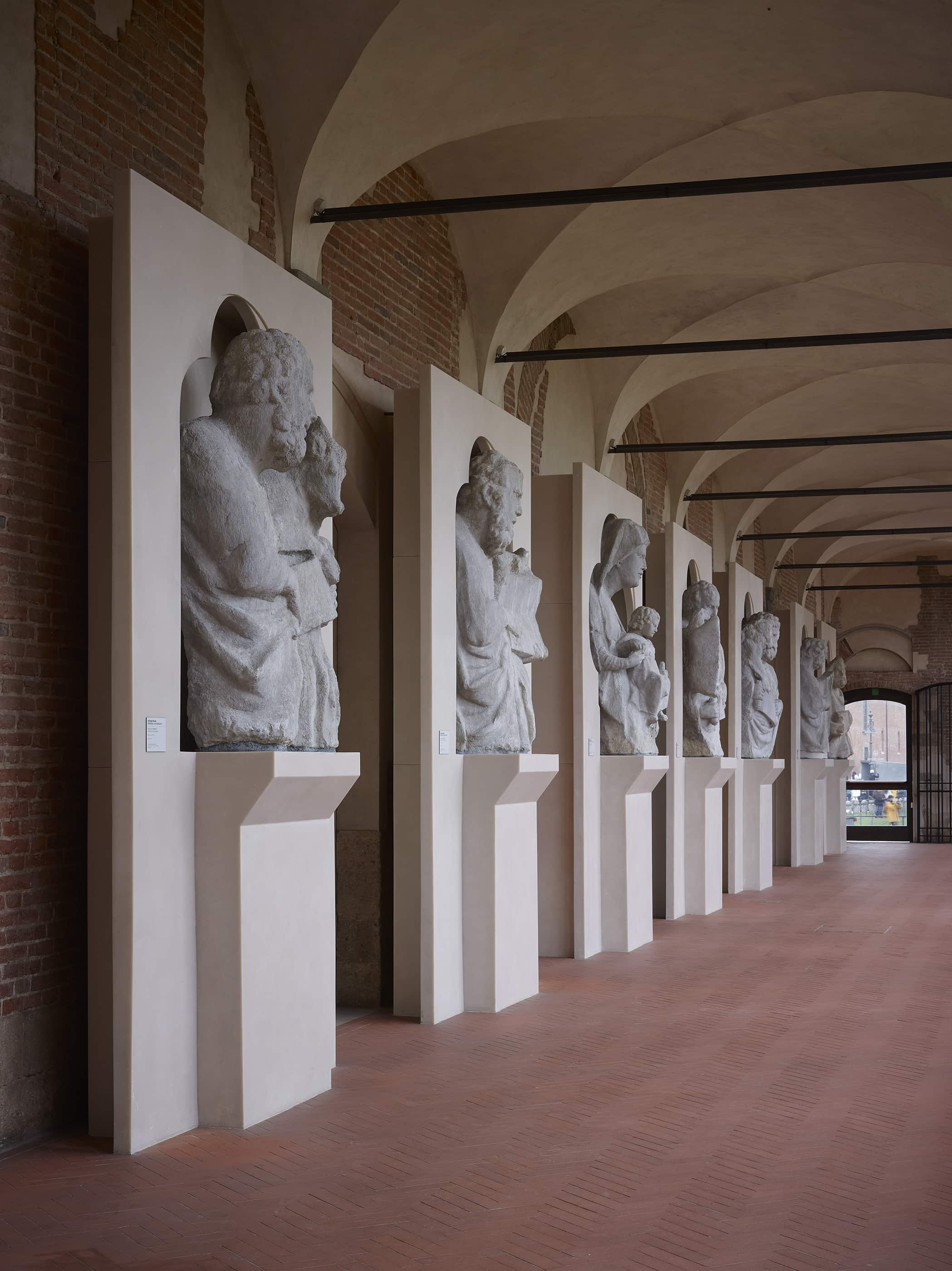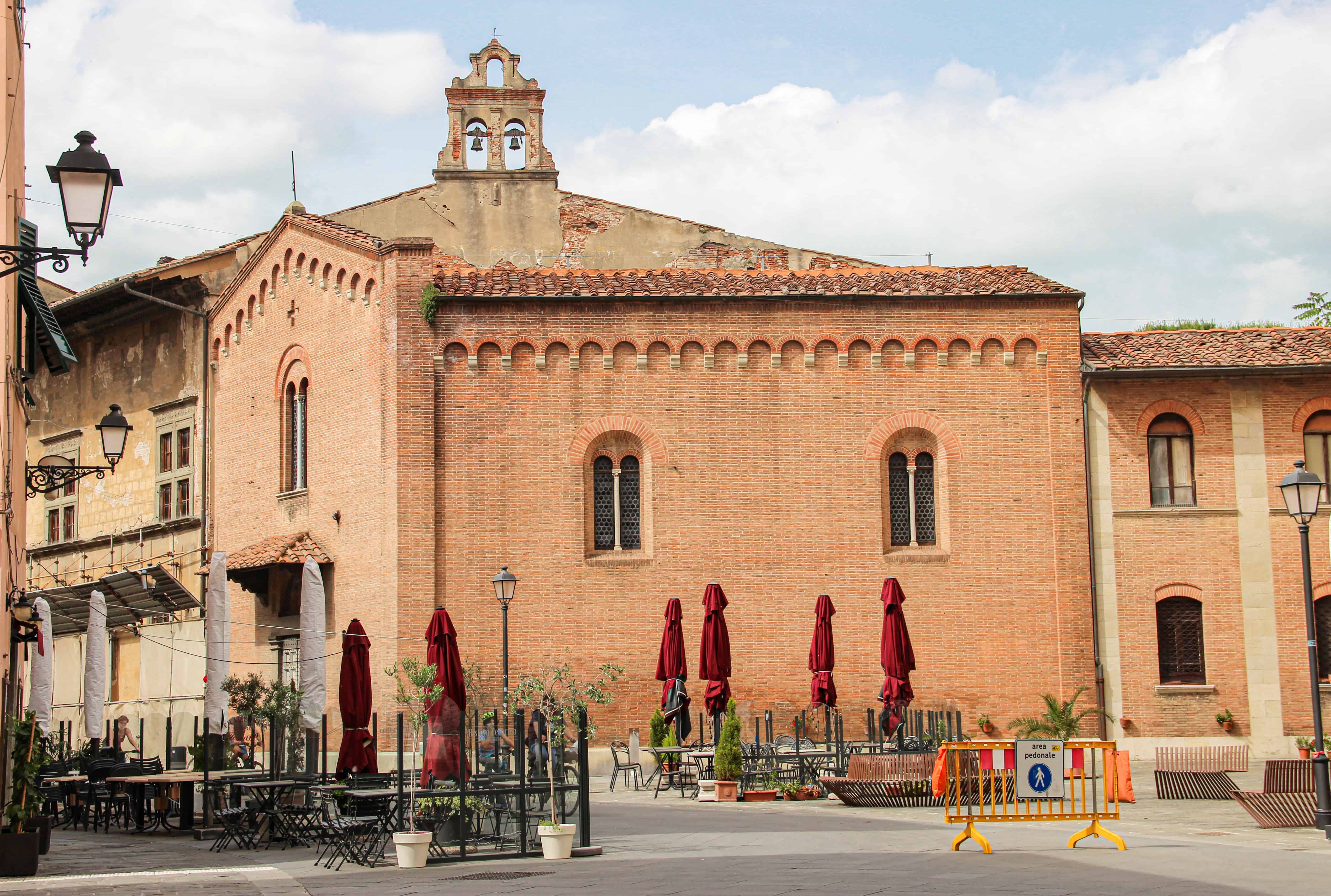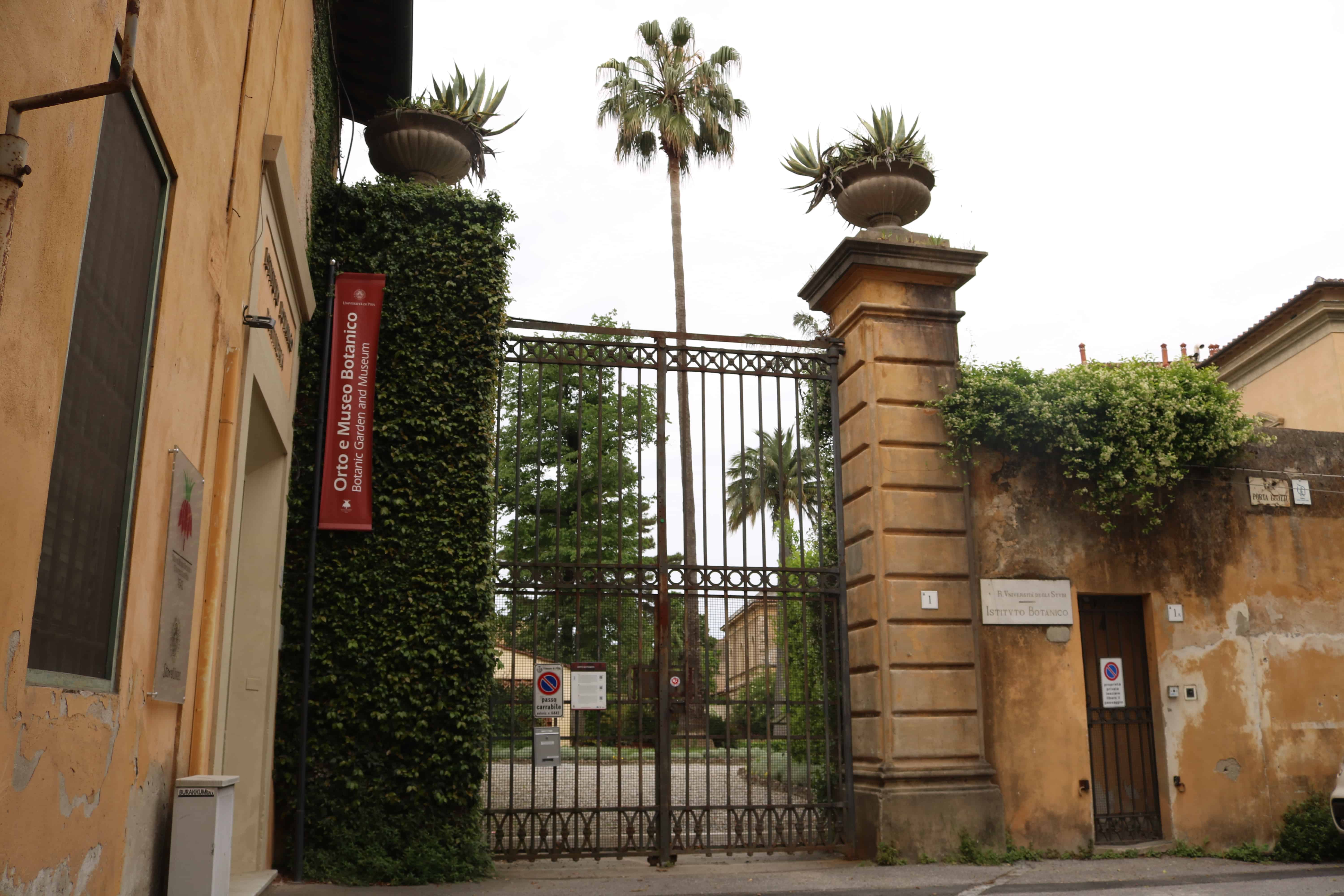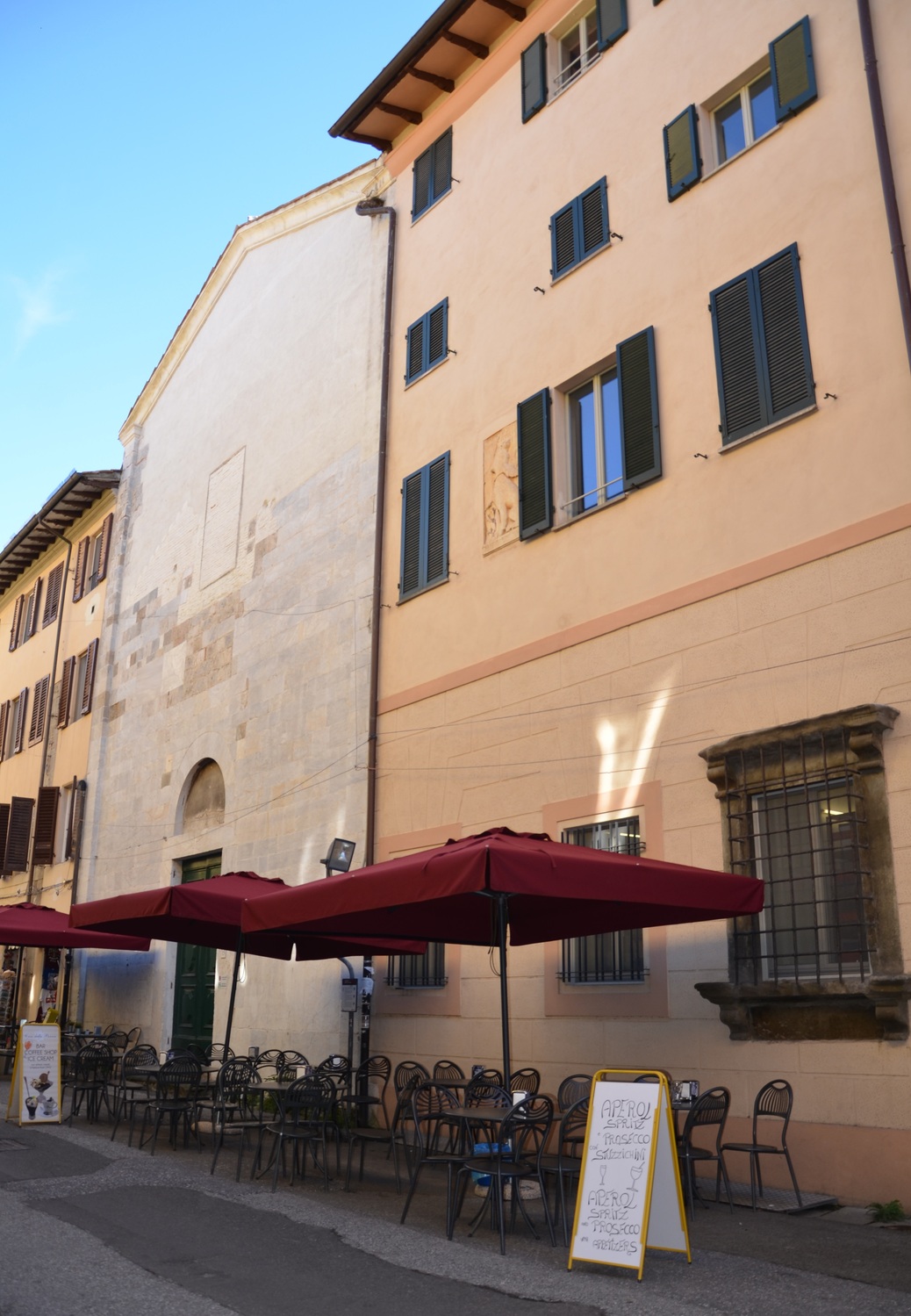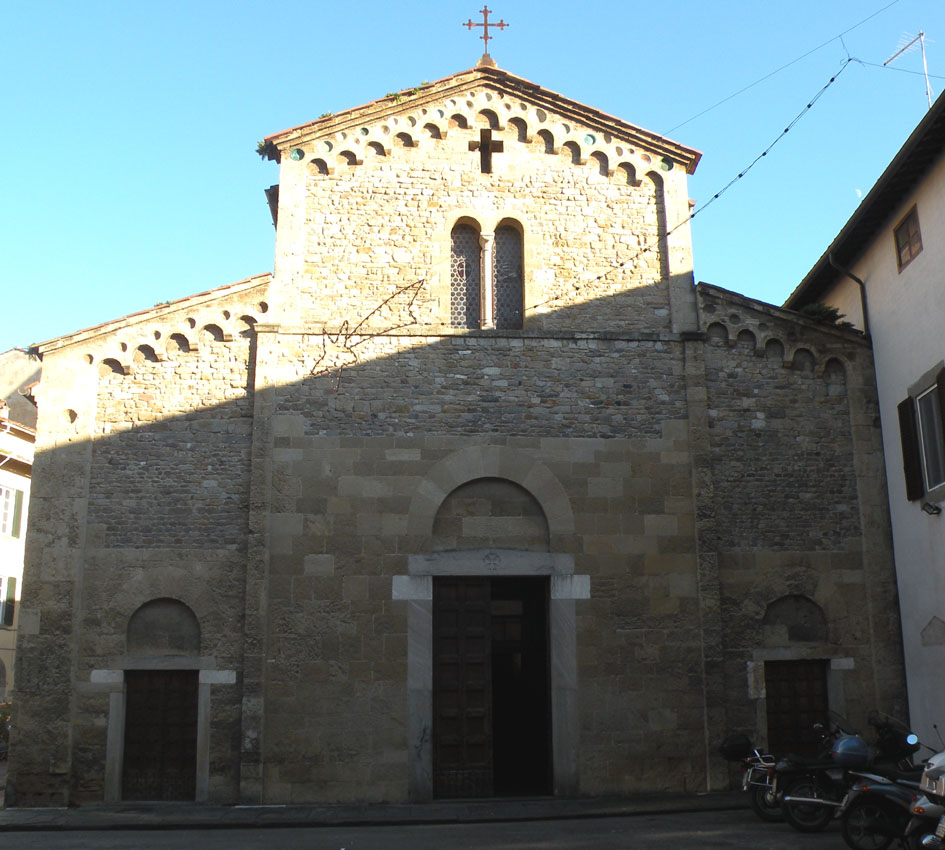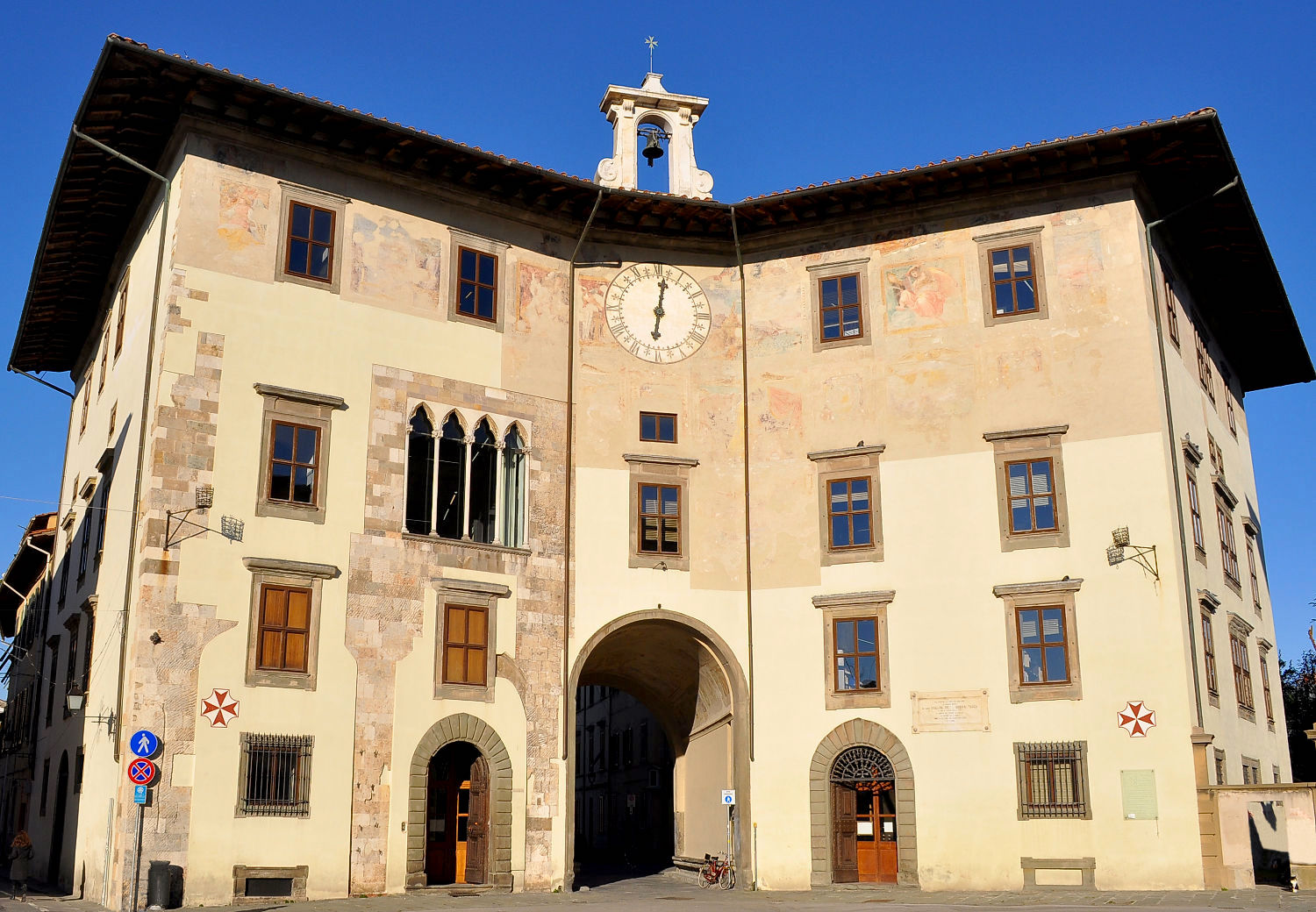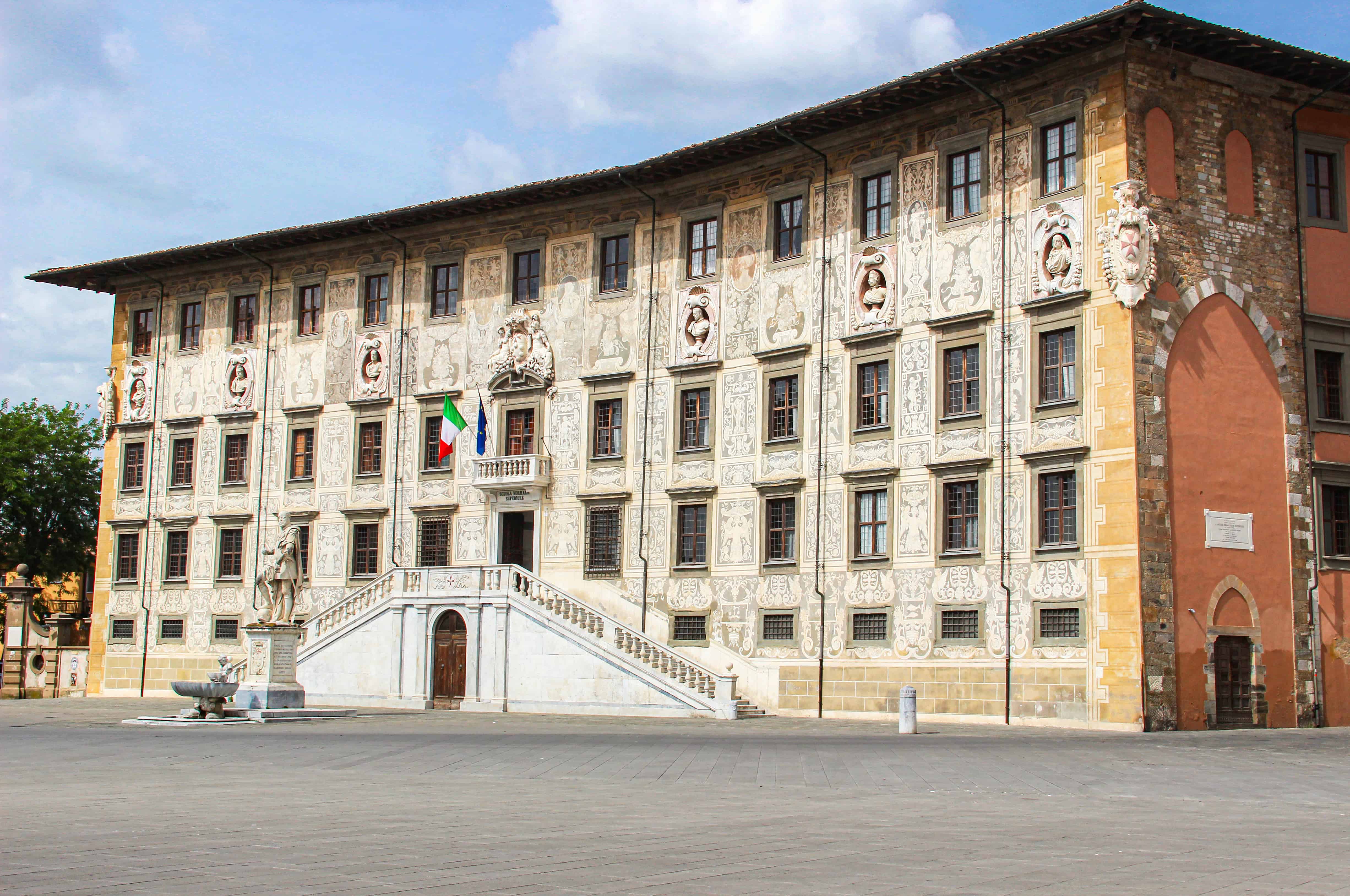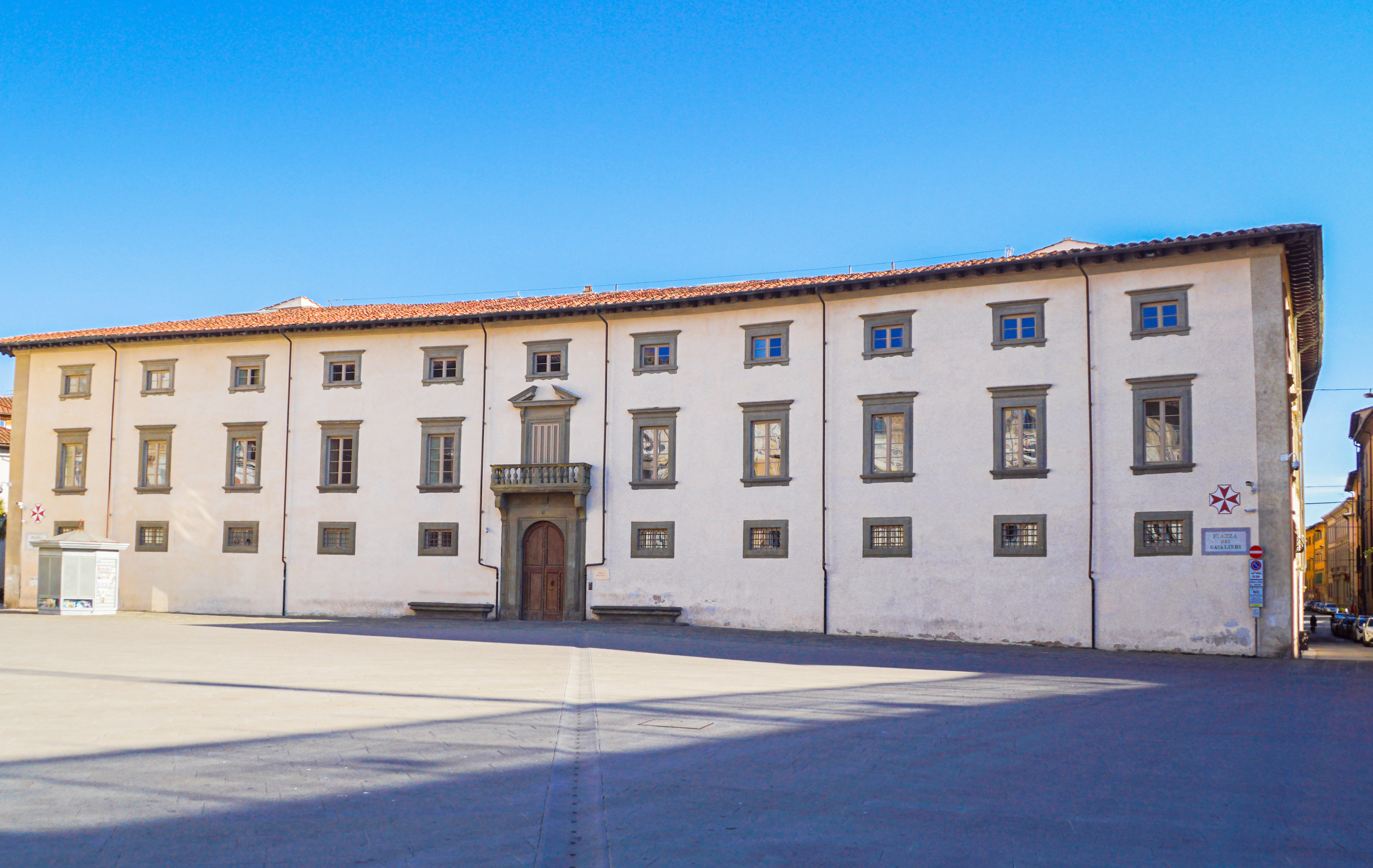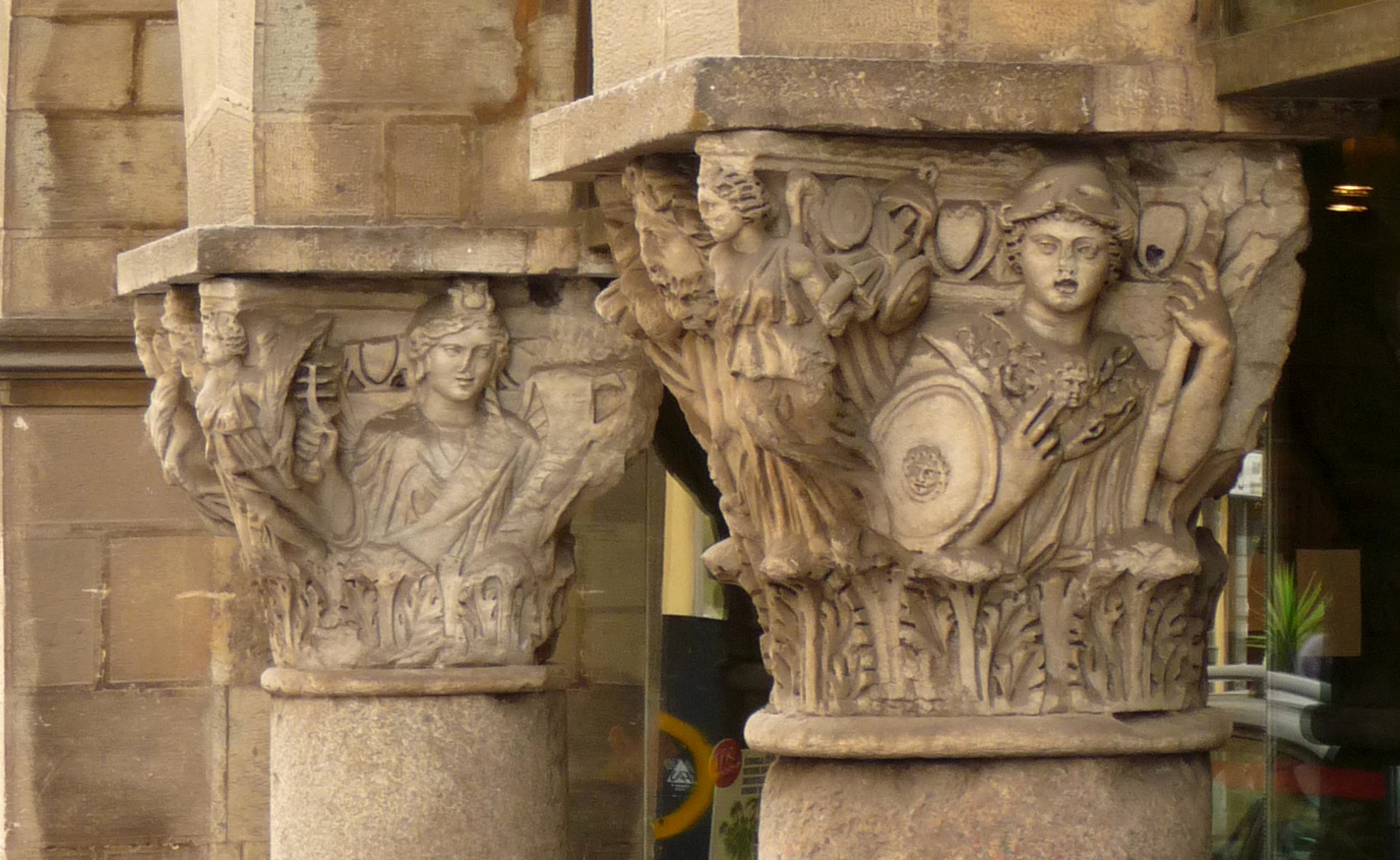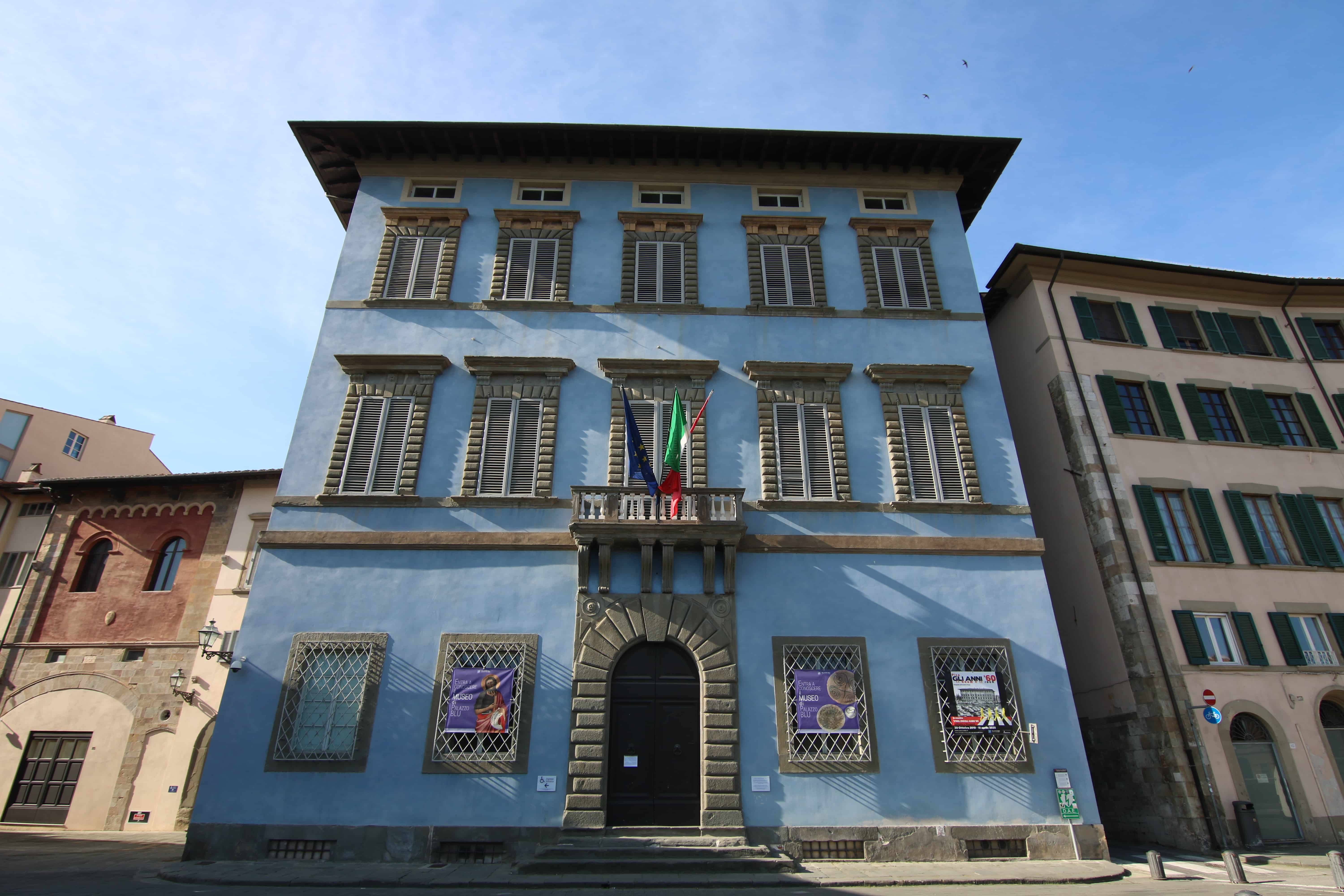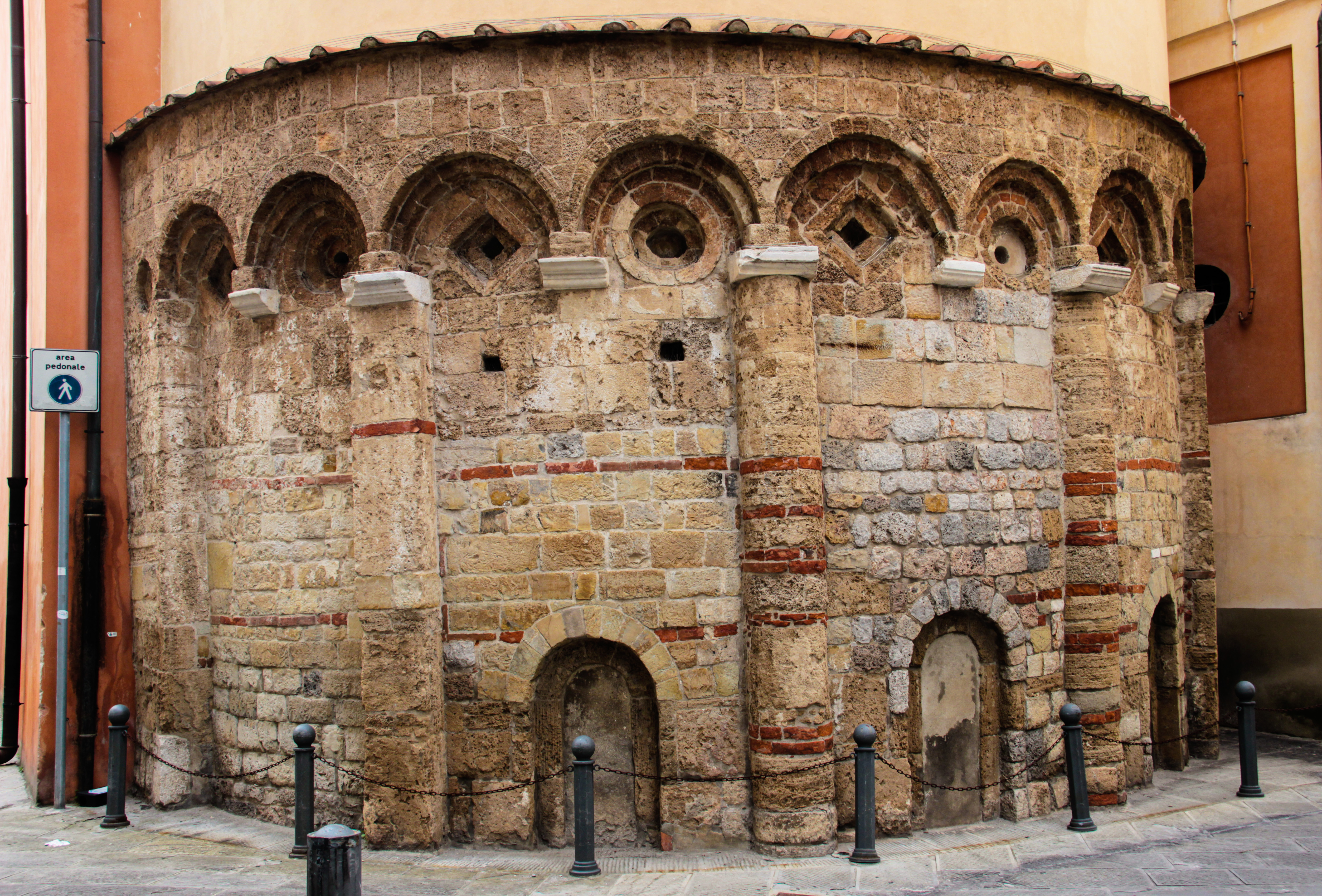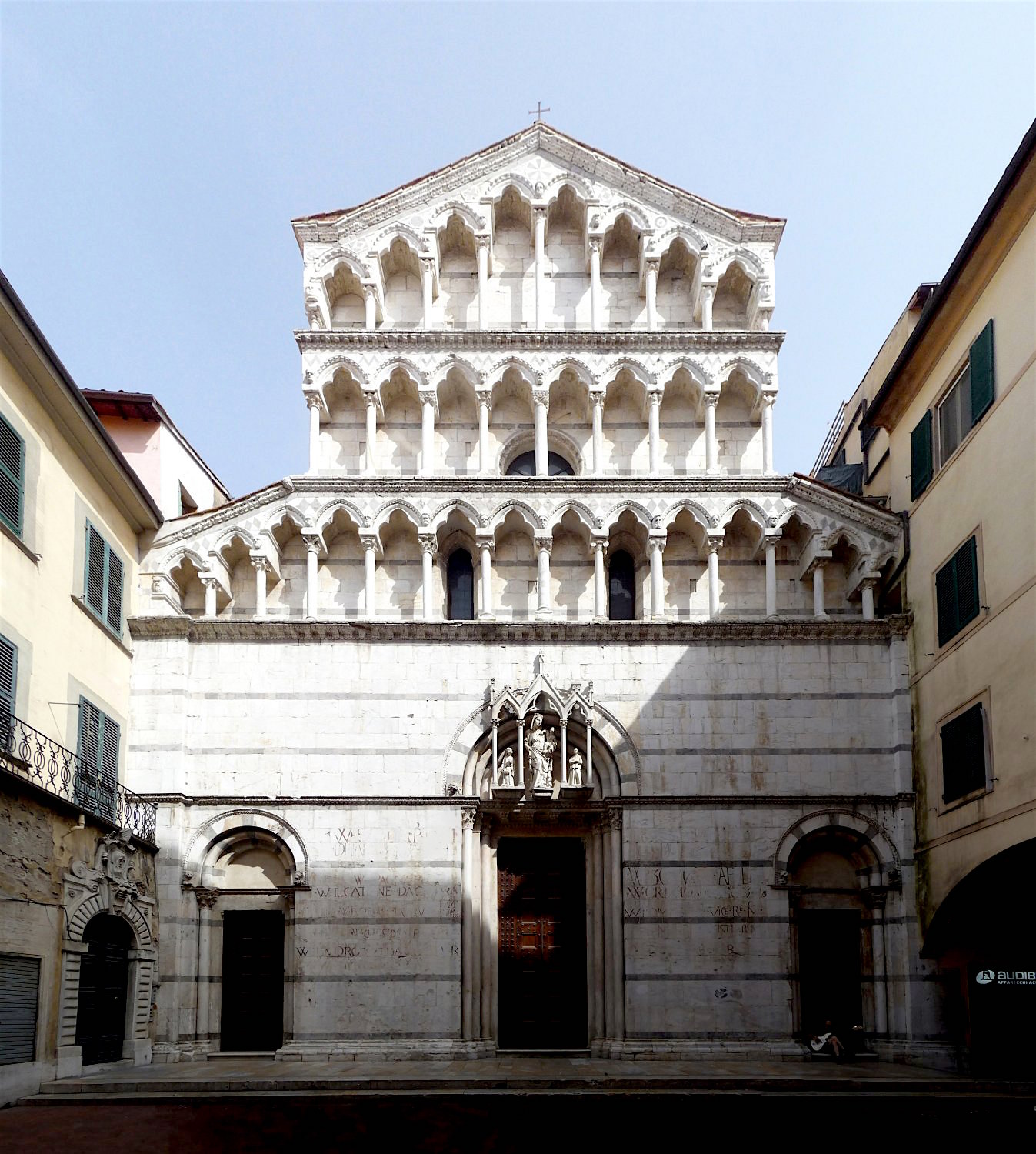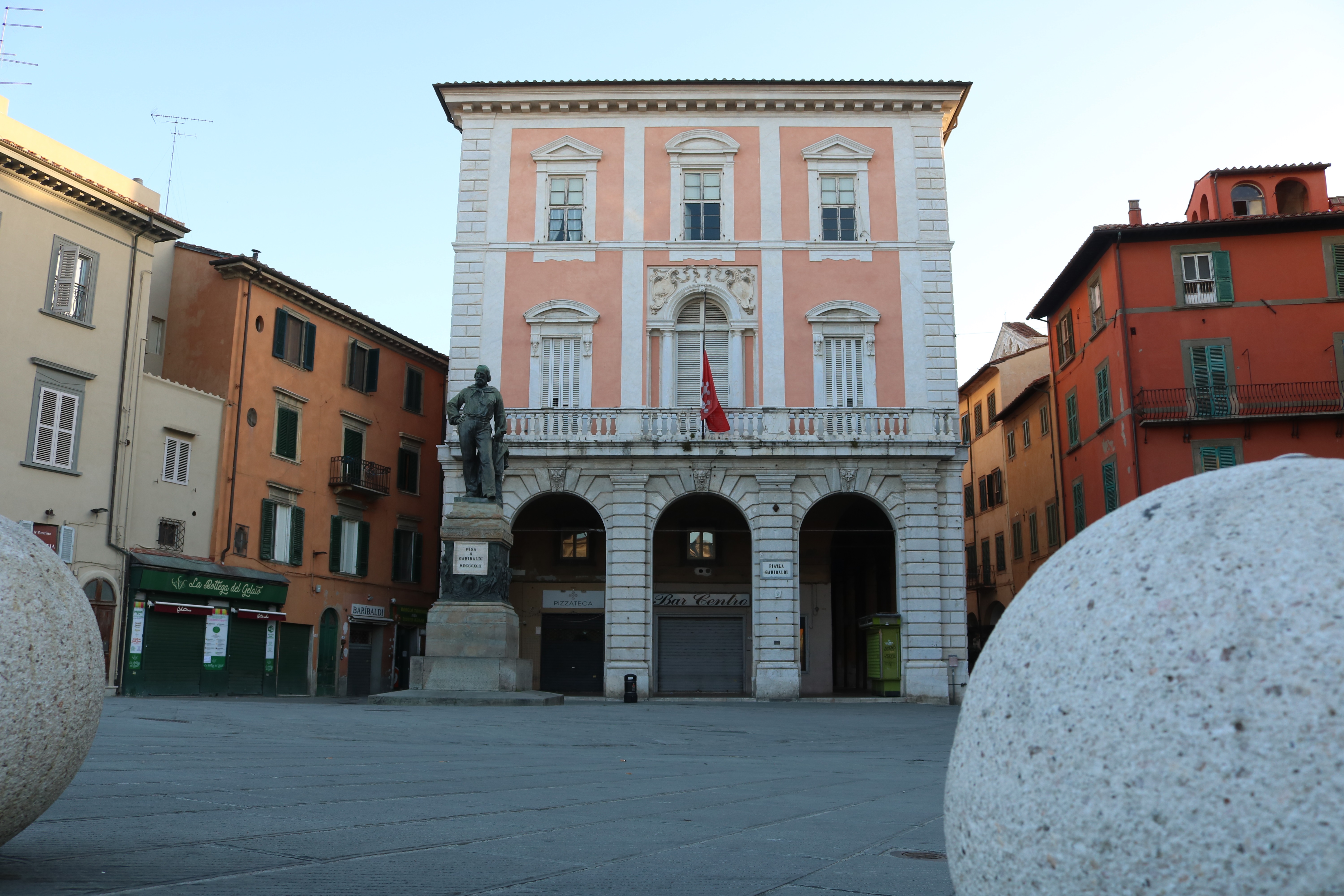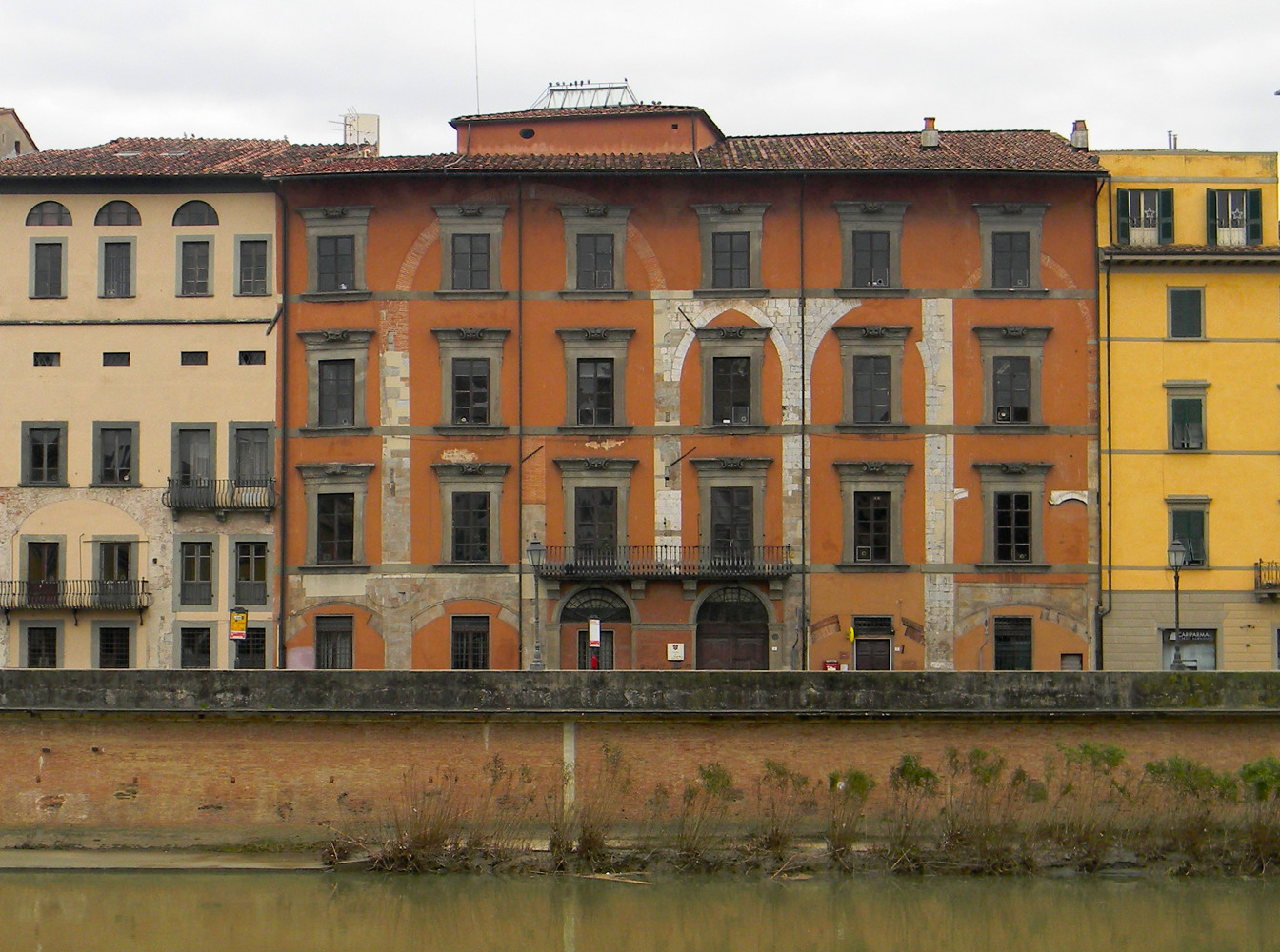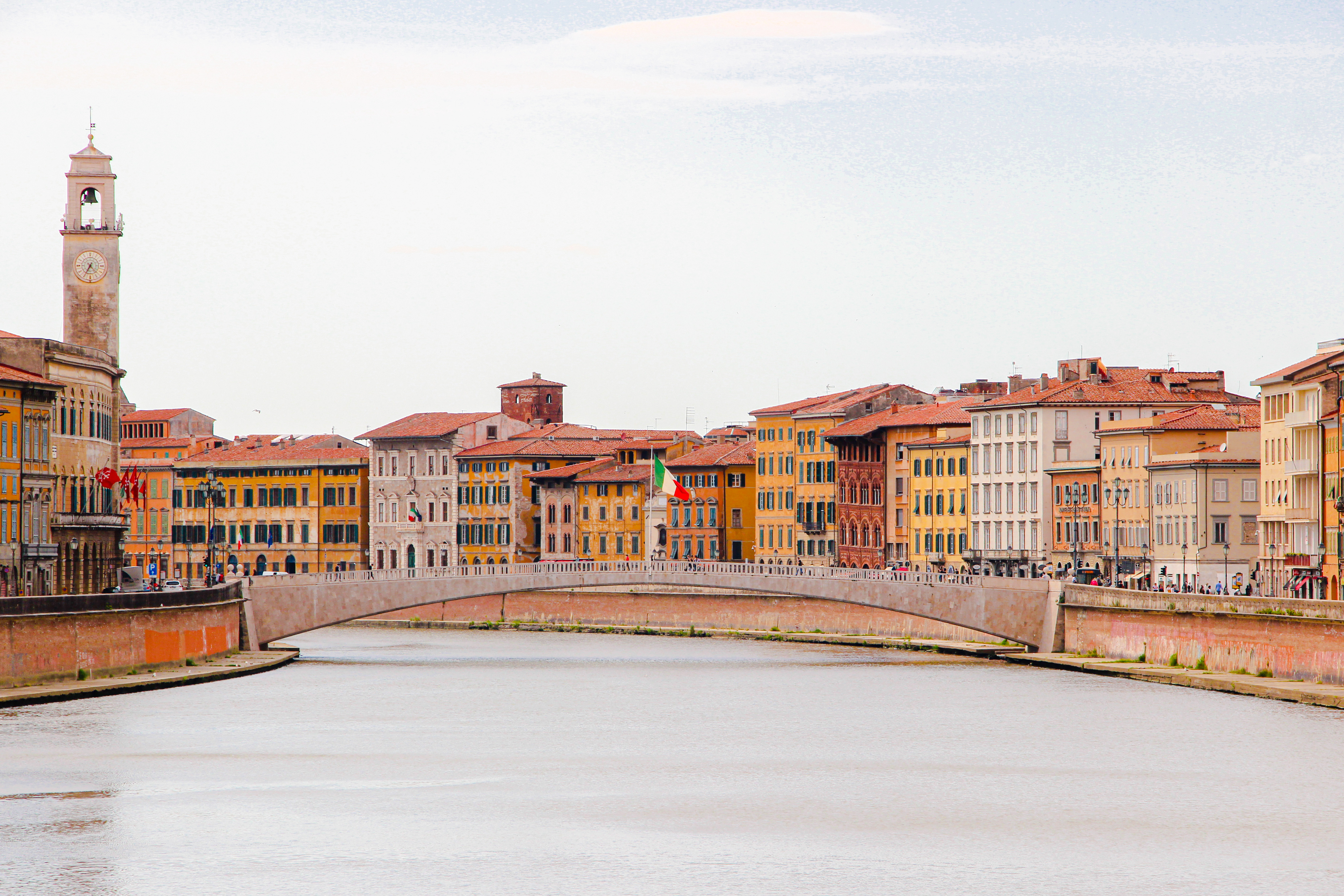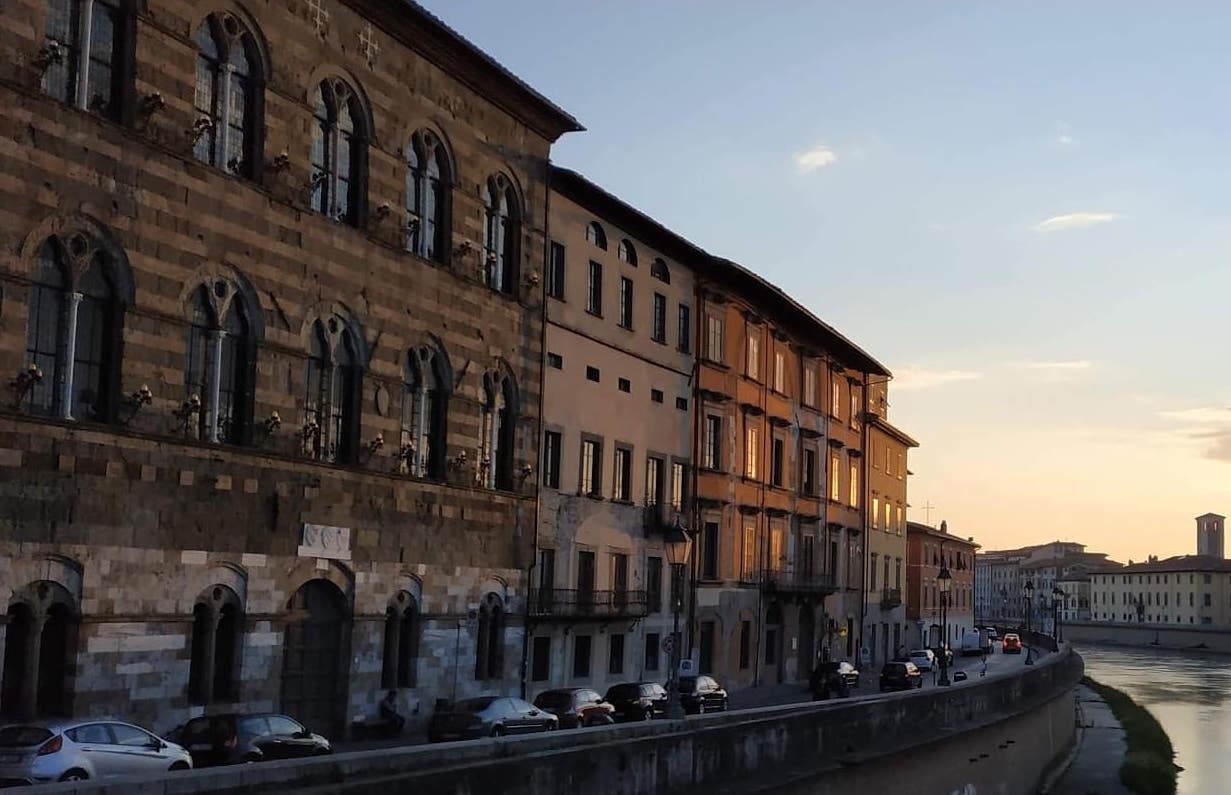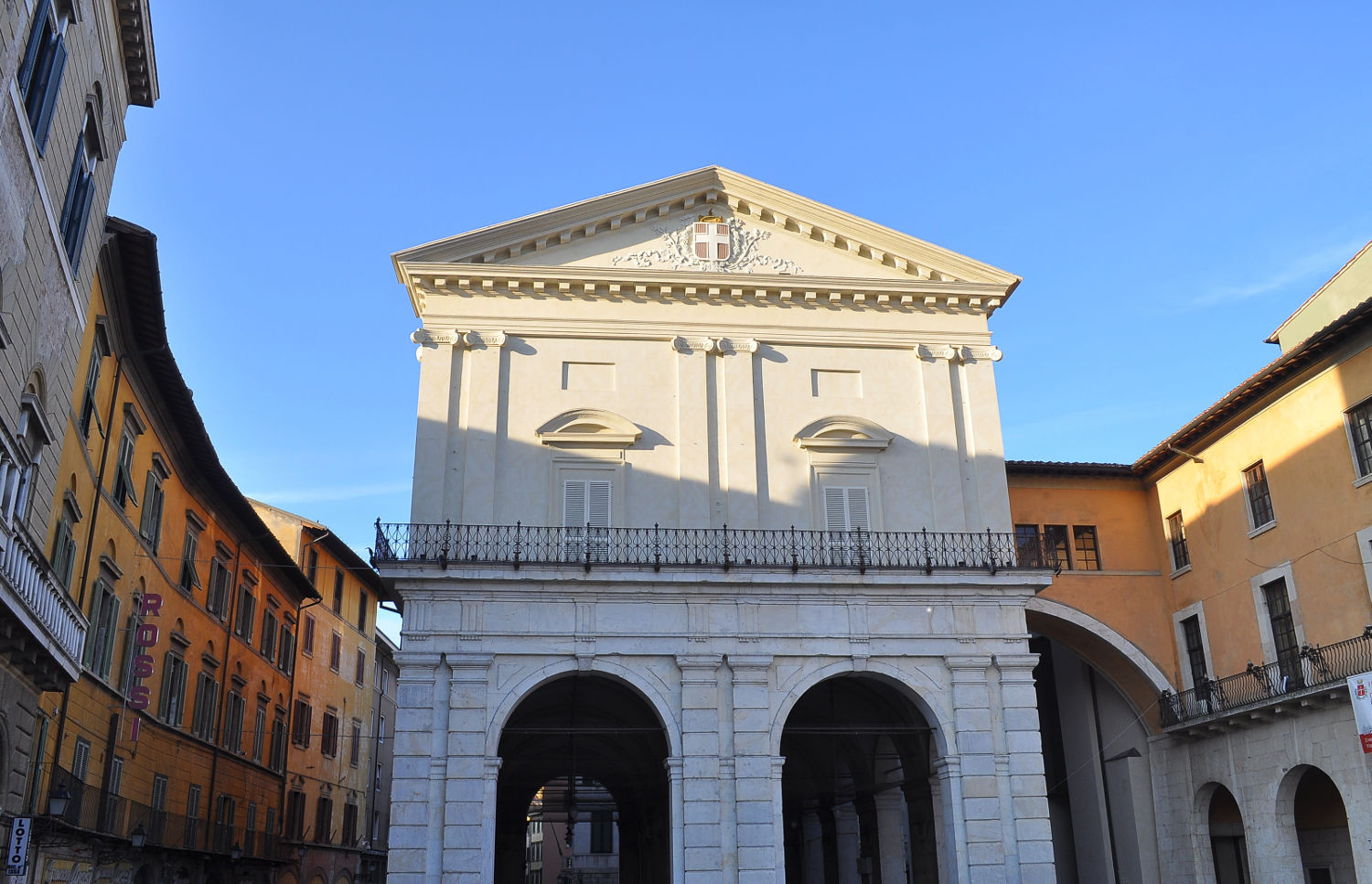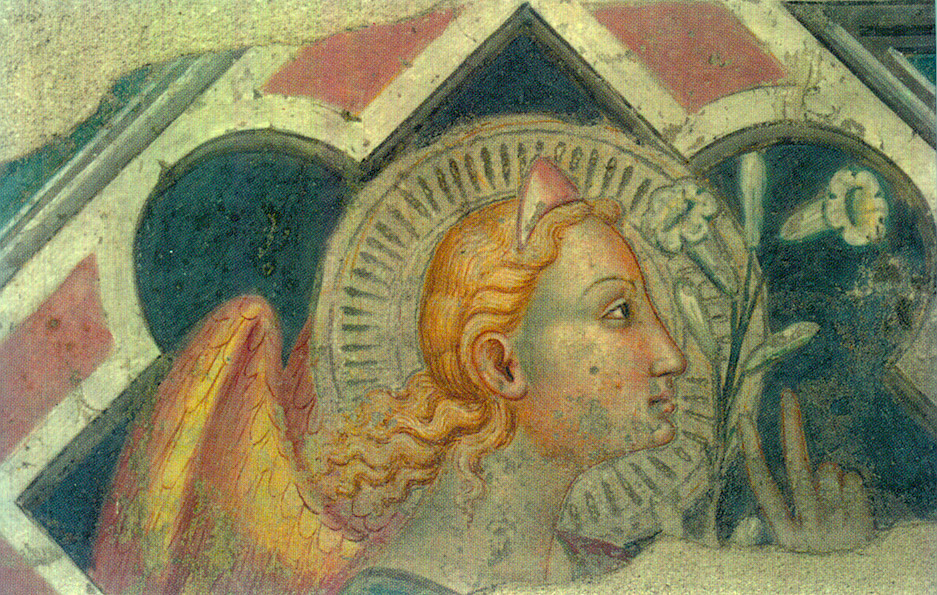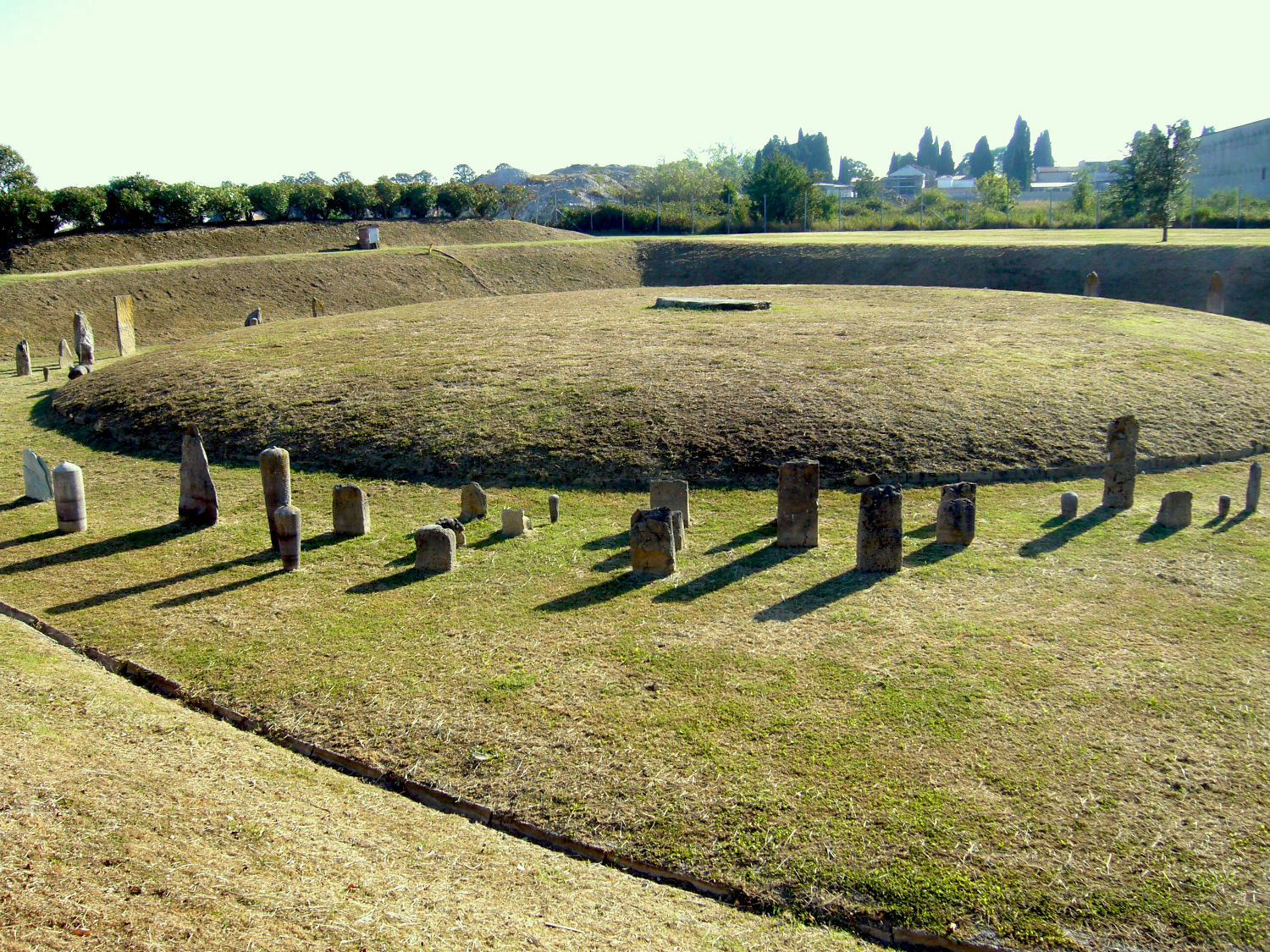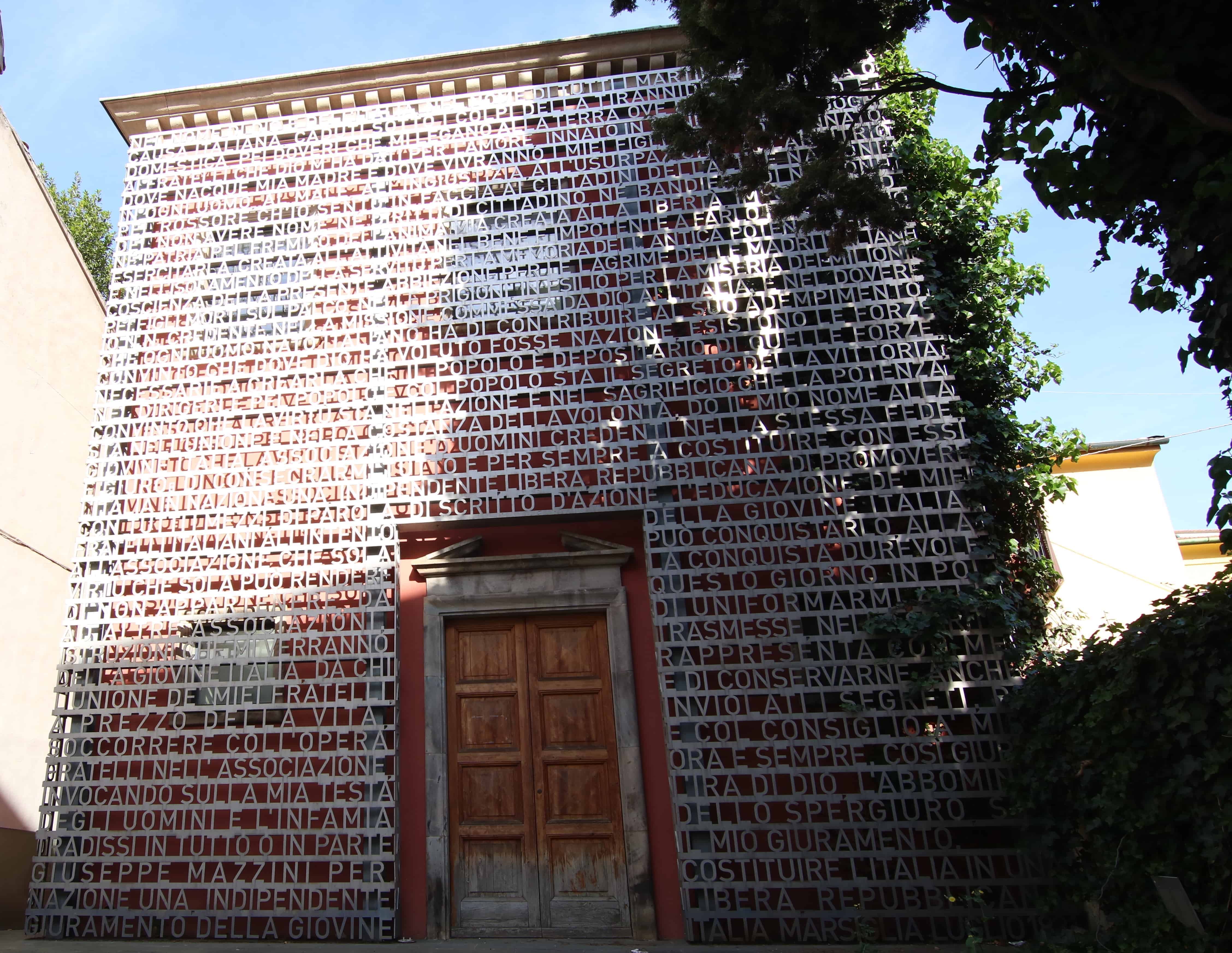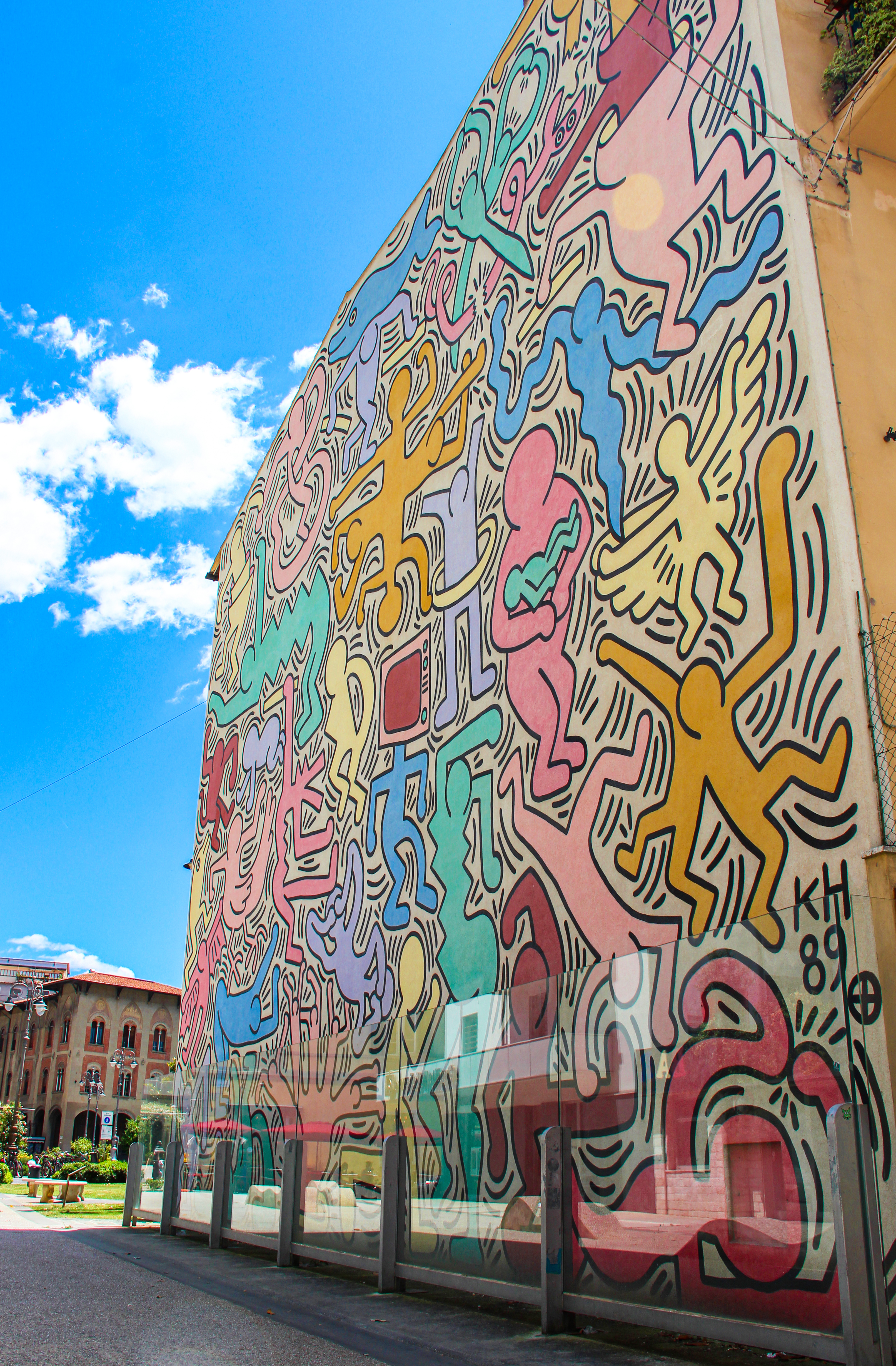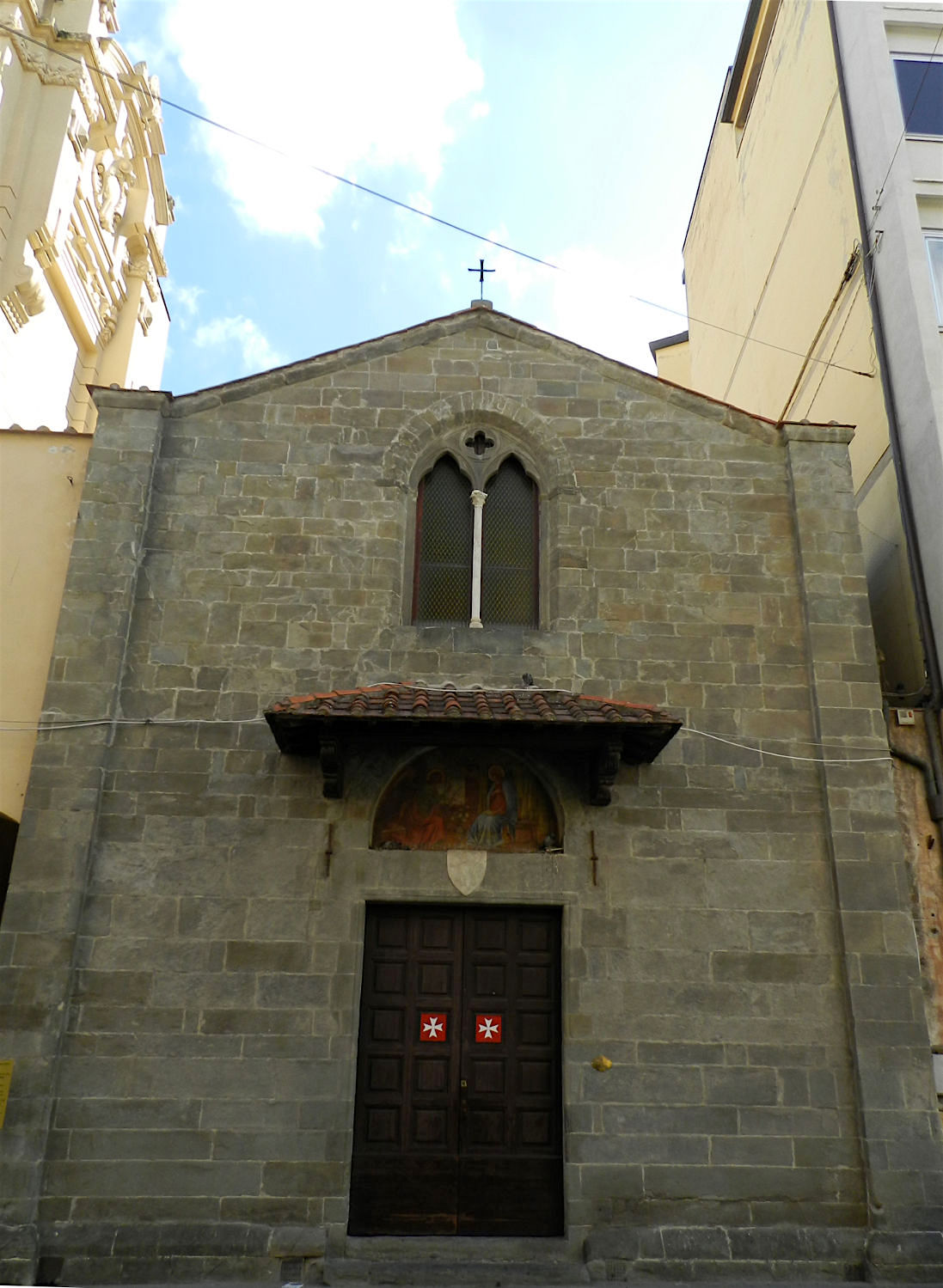Cathedral Place, Museum of Preparatory Drawings
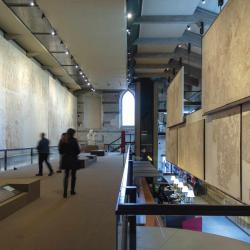
vThe premises of the museum are in the ancient Spedale Nuovo, built in mid 13th century, by will of Pope Alexander IV to be a “pellegrinaio” (refuge for pilgrims) to record the reconciliation between Pisa and the Holy See. We owe the Spedale to Giovanni di Simone, by some held to be the architect of the Monumental Cemetery.
The building remained part of the hospital until 1969, when it was decided to renovate it and use it as premises for the Museo delle sinopie. On 27th July 1944 a grenade shot by American artillery set fire to the roof of the Camposanto. Molten lead poured over the frescos on the walls. At the time it was thought the only remedy to save these paintings was to strip them off the walls. This operation revealed the sinopias, that is, the preparatory drawings in red ochre underneath the frescos. Because of their vulnerability, these too were stripped off the walls and put in the new museum, designed, prepared and arranged by Giovanna Piancastelli Politi, Gaetano Nencini e Antonino Caleca.
This is the largest collection of medieval drawings in the world. In it we perceive the artist working in the full spate of his creativity. In many places several hands can be distinguished, even where the final result is uniform in style, for example in the Crucifixion attributed to Francesco Traini (1335) and the Triumph of Death, Last Judgement and Thebaid cycle, probably the work of Buffalmacco. The preparatory drawings (sinopias) of later cycles (late 1300s to 1400s) such as The Stories of Job, by Taddeo Gaddi, The Stories of St. Ranier by Andrea Bonaiuti and Stories from the Old Testament by Benozzo Gozzoli are also on display in the museum.

